NM7R
Frank Wolfe
PO Box 91
Nahcotta, WA 98637
Biography
as seen on
QRZ.com
|
First licensed as a Novice in 1980, back when everyone had to have at least 5 WPM Morse and there were five license classes, I upgraded to Technician two months later, then moved up to Advanced in 1982 (after being a General for 45 minutes) in order to have access to HF SSB, when my parents announced their plans to retire to a sailboat. I finally earned my Extra in 1984 in order to help start a VE group with the local club in Astoria, Oregon. I hated the code until I studied for my General. Somewhere on the way to 13 WPM it started to be fun. The increase to 20 WPM for the Extra was easier than the General had been. My opinion of CW is that it makes you a better listener, teaching you to focus your attention on what you want to hear, an advantage even on voice contacts.
Home is rural coastal southwest Washington State, where I am currently President of the Pacific County Amateur Radio Club, teaching ham radio classes and providing technical support for the area repeaters. I serve as a Volunteer Examiner, ARRL Technical Specialist, and former Director, and since 2011, Chair of Western Washington Amateur Relay Association, the repeater coordinator for Western Washington State.
I have actively volunteered in ARES/RACES and Emergency Services at the county level for over 30 years, receiving the Governor's Volunteer Service Award in 2009. I have been an AEC, EC, DEC and presently serve as the ARES Section Emergency Coordinator (SEC) for Western Washington.
I am half-owner and "chief engineer" of BeachNet, an extensive system of linked repeaters and remote bases blanketing most of Pacific, Grays Harbor, Mason, Thurston, Wahkiakum and parts of Lewis, and Clatsop counties. This project began in 1998, and has expanded to provide emergency communications in this very rural corner of our state. I also operate IRLP Node 3105, which is a WIN System Affiliate station. I enjoy building and repairing electronic systems, having spent a career doing it professionally. I have been told a number of times that I have "The Knack", which I come by honestly. My father once said, only partly in jest, "I'll be damned if I'll spend $30 on something I know I can whip up in the garage for a hundred."
Please feel free to use these repeaters if you are in the area.
I was a Net Control Station (NCS) for the Maritime Mobile Service Net for six years in the 1980's. I had to leave the Net 1989 through 2006 due to my working schedule. During those years I used the Net as a contact point with my Dad, who frequently monitored. When I retired, I returned to the Net. You'll find me on 14.300 MHz on Wednesday evenings (actually Thursday morning Zulu time) in the 5:00 PM Pacific Time slot. In 2012 I started a new job as an elected County Commissioner. I occasionally have to miss a net session, but still try to make my regular slot every week, and occasionally pick up an open slot for one of the other Net Controllers who has to miss.
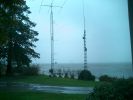  
I still use the same HF rig now that I did 30 years ago (if it works, don't fix it). The exciter is an Icom IC-720A transceiver with hand mic, the first all solid-state transceiver Icom made with a general coverage receiver. This drives an old Halicrafters amplifier that I completely reworked, with a pair of 572Bs to replace the original tetrodes, a solid state rectifier section to replace the original mercury vapor tubes, and added input tuning tank circuits to make the grounded-grid circuit more friendly for the solid state exciter. This puts out about 1200-Watts PEP on voice peaks into a Cushcraft three-element tri-band Yagi at about 45-feet, 100-feet across the yard, overlooking Willapa Bay, putting five miles of salt water to the east. The back-up antenna is a Hy-Gain Hy-Tower all-band vertical. I bought it 30-years ago, used, from a fellow that had owned it for 20-years, making the antenna 50-years old. It's a full quarter-wave or better from 75- to 10-meters, except for 60- and 30-meters. Having a salt water mirror out in front of the antenna provides a significant boost to signals to the east, maybe as much as the amplifier. The antennas, and a dummy load, are on a rotary switch, making it possible to select between them quickly. The transceiver is buffered by a pair of batteries that float the power supply, providing smooth, quiet, uninterruptible power. A Heathkit phone patch, and a Bencher paddle for CW round out the station. For the bands above 30-MHz, there is a tri-band vertical above the Cushcraft for 2-meter, 1.25-meter and 70-centimeter FM. On the side of the tower is a half-wave vertical wire dipole for 6-meter FM, and 220- and 440-MHz yagis low down, supporting a full-duplex IRLP remote link to one of my repeaters. Click on thumbnail images to enlarge.
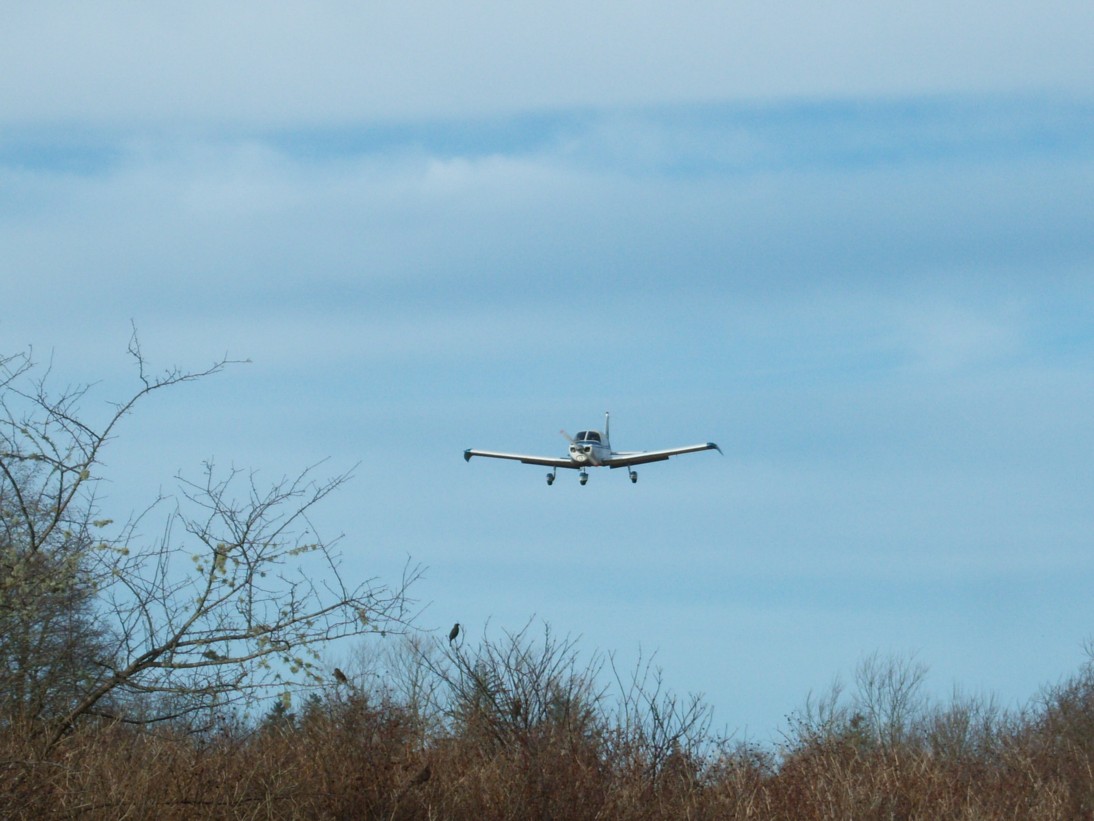 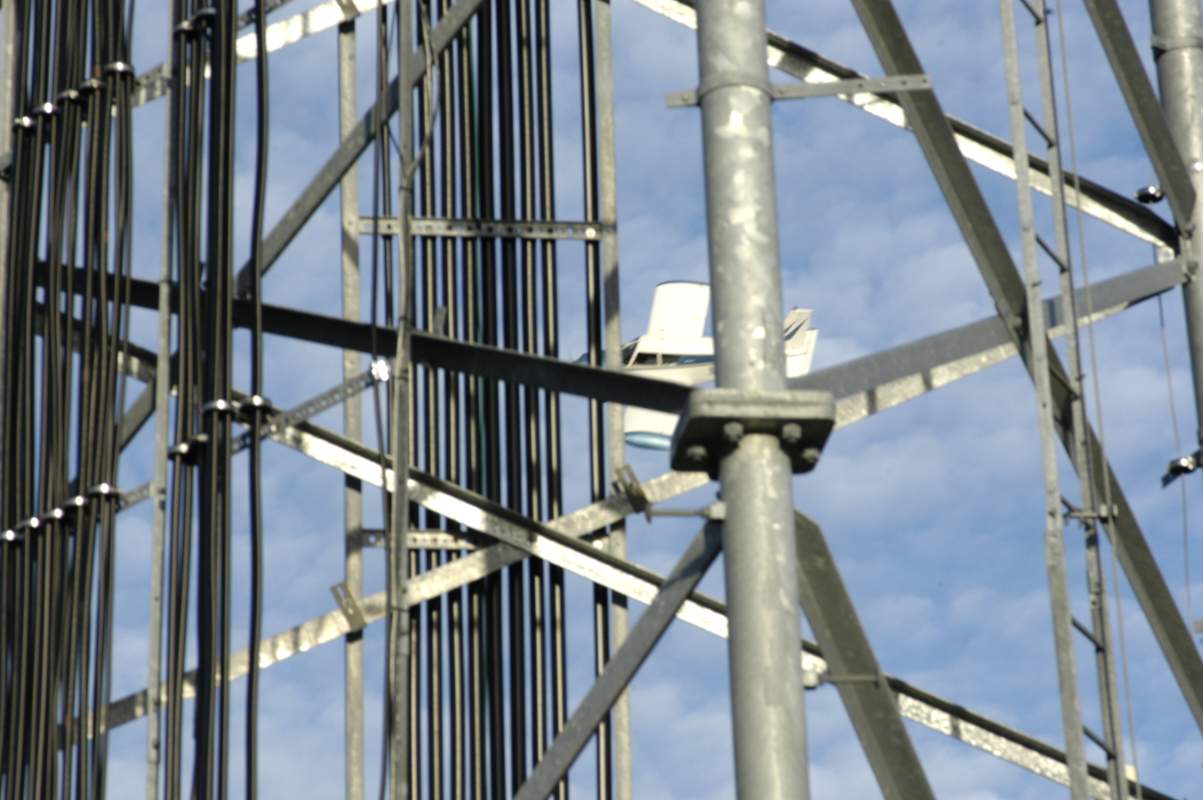 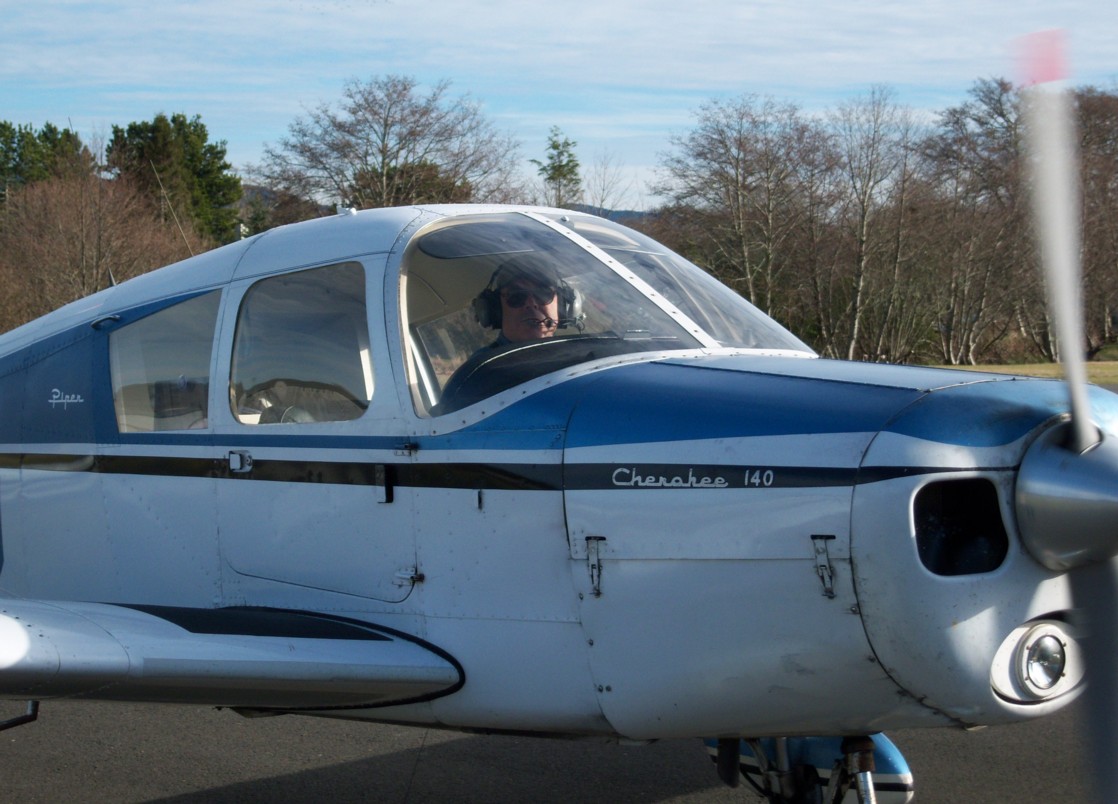
A 1500-hour Private Pilot, licensed in 1993, I enjoy operating VHF and UHF FM while flying all over the Pacific Northwest in my Piper Cherokee. The IC-W32 HT is all that is necessary for over 150 miles simplex range most of the time. The aircraft also makes a handy tool for inspecting towers and antennas following winter storms, allowing a condition check including 14 sites in under 3 hours. With a good pair of binoculars, it is amazing how well this works from a couple of hundred feet or so away.
 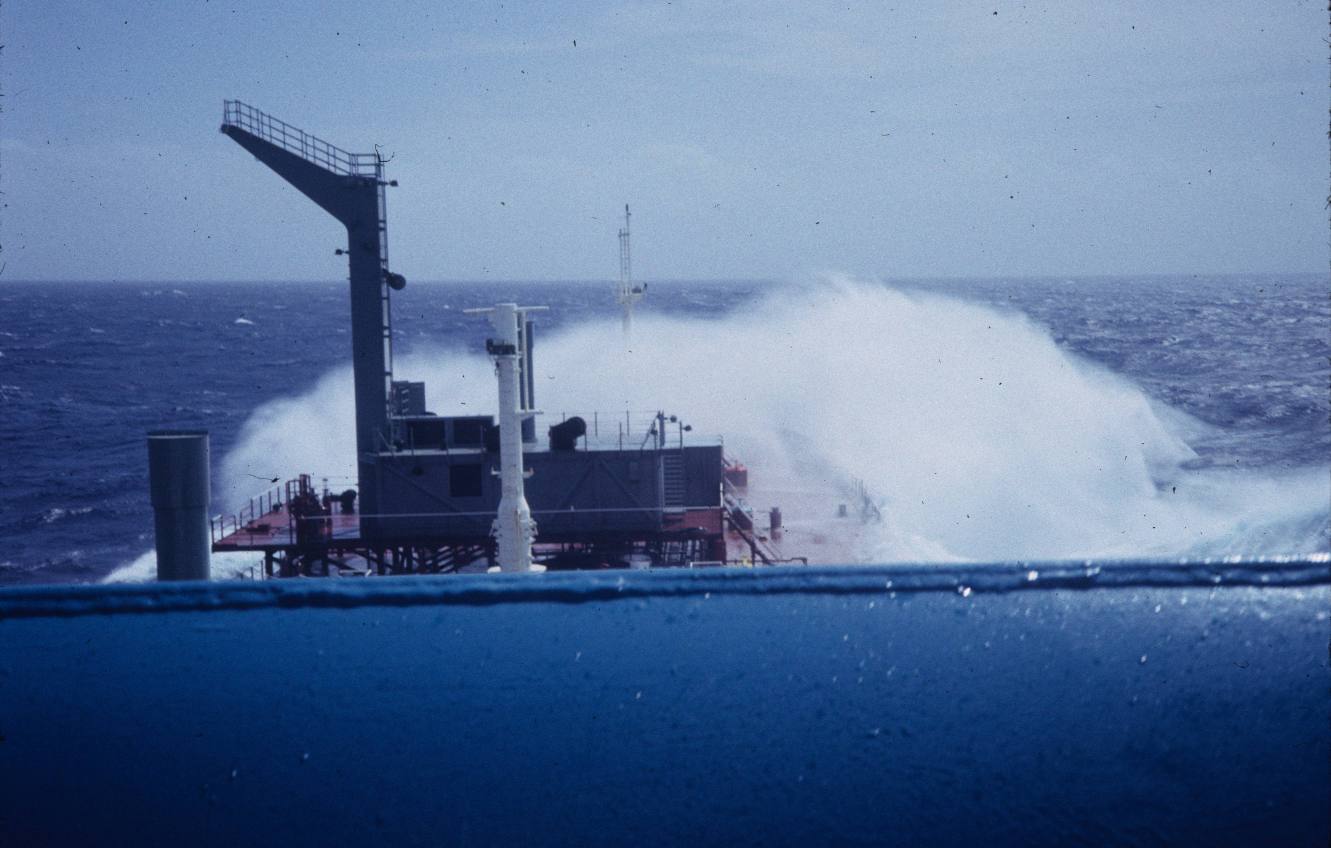
In 2006 I retired from sailing as a Merchant Marine Radio Electronics Officer (Radio Officer/Electronics Technician) on Military Sealift Command contract vessels and a United States Naval Ship, remaining senior permanent REO on my last ship for a dozen years. Named for a WWII Merchant Mariner Medal of Honor recipient, the USNS Richard G. Matthiesen was a single-screw, double-hull "product tanker", 615 feet long, 90 feet wide, carrying 435,000 barrels (10-million gallons) of cargo, which could include one-to-several different grades of jet fuel, diesel fuel or infrequently gasoline. The US Military uses JP8 Jet Fuel (which is like very clean, de-watered kerosine) for just about everything; Humvees, helicopters, generators, trucks, airplanes, even ships; and we transported a lot of it. We could not carry crude or heavy fuel oil as a cargo. Five laps around the perimeter of the deck was a (nautical) mile, but there were many days when being on deck was either uncomfortable or downright dangerous. In a heavy seaway, we would have waves break over the bow and roll all the way back to slam into the house. Beyond a certain basic level, comfort was not a design criterion. This was summed up in the expression, "It ain't the Love Boat".
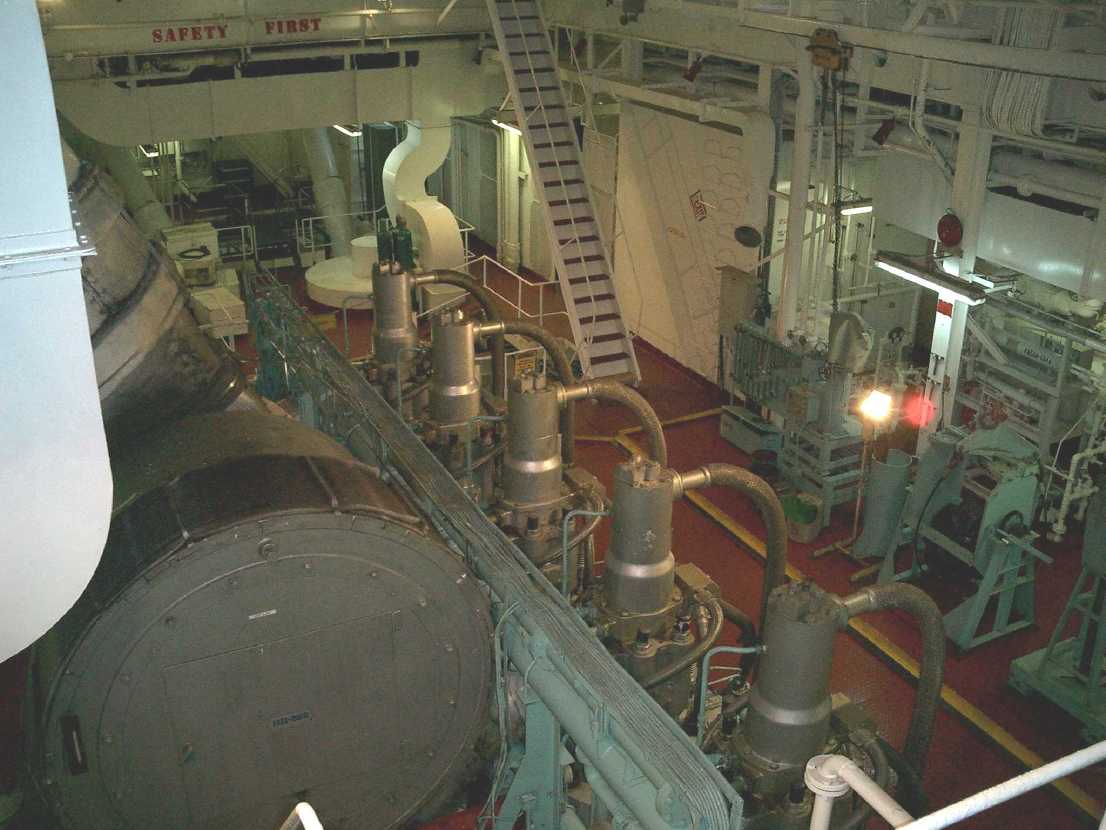
When the ship's own bunker tanks were full, we were good for something over 10,000 miles. We generally covered about 380 nautical miles per day. The main engine (there was only one, and it was 4-stories high) was a 15,800 horsepower 5-cylinder 2-stroke turbo-charged slow-speed diesel, with a 0.75-meter bore and a 2-meter stroke. At sea-speed (16 knots) it turned at 83 RPM, and got about 290-feet to the gallon of heavy fuel oil. Bunker oil is the gunk left after crude passes through a refinery and everything of value is cracked off. At room temperature it has the consistency of dirty Vaseline. The tanks are heated to keep it liquid, and it is run through a centrifugal separator to remove sand, grit and metallic debris. The lighter fraction goes to the engine, and the heaviest fraction, along with the sediment is returned to the tank. One of the two fuel tanks is cleaned out and the residue disposed of at each shipyard period. The cooling system for the engine stacks made fresh (distilled) water, and we made more water than we could use. The prop was bolted to the tailshaft, which was bolted to the engine, without a clutch or gearing (direct-drive). To run in reverse, the engine had to be stopped and restarted turning backwards. This could not be done if the ship was moving faster than about 8-knots, because the water turned the prop with too much force for the starting-air pressure to overcome. This meant that a "panic stop" while underway took more than five miles. Noise and vibration are your constant companions aboard ship, and you learn to sleep through just about anything. But when that 83-RPM heartbeat stopped in mid-ocean, everyone was suddenly starkly awake!

Ships are not very maneuverable under the best of circumstances. They are creatures of the open ocean, out of their element in close quarters. There is a lot of mass that has to be pushed around to change direction or speed. The rudder can only steer when there is water moving past it, so in close quarters, a ship needs to keep moving to remain under control. Most cargo ships have their navigation bridge (wheelhouse) well aft, near the back of the ship. Even seeing other vessels within a few thousand yards forward is difficult, either visually or on radar because the bow is in the way. If you encounter a ship close to shore, it is probably constrained as to where it can go due to its draft (depth in the water). We drew 36-feet loaded, 26-feet empty. Once, when heading into Key West, FL, moving as slowly as we dared, in the very narrow channel through the coral reef coming in, we received a call on the VHF. "Big Ship this is the charter boat off your port bow. We have a big marlin on the line. Could you give us a little room here? Over." Captain Ralph walked over to the radio and paused. Picking up the mic he said, "This is the Matthiesen. Skipper, as the captain of a loaded oil tanker, in some of the most environmentally sensitive waters in the world, if I have to choose between creating an ecological disaster, or running you over, how do you think I'd decide? Over." Silence. The boat skipper finally came back, "Ah, thanks Captain. We'll stay clear of you."
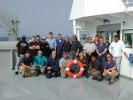
Our normal crew compliment was 23; 8 officers and 15 unlicensed. Each position had specific requirements, and both officers and crew were represented by unions. In addition to the US Coast Guard Merchant Marine Radio Officer License; Standards of Training, Certification and Watchstanding document (STCW); and Seaman's Papers ("Z-card"); I hold FCC Commercial Radiotelegraph (T2); GMDSS Operator/Maintainer; and General Radio Telephone Operator (GROL) Licenses; Radar and Service Endorsed. In addition to the civilian certifications, I had a security clearance and had to maintain a weapons qualification. The Merchant Marine license, and the Navy (for whom we worked as civilian contractors), required classes to stay current, nearly all of which were completed during our vacation time. I learned to hate Power-Point presentations. Work tours were nominally four months on and four months off. Having a 4-month vacation every 4-months is pretty nice. Being completely gone for four months or more is not so sweet. There were many months when my wife literally didn't know which ocean I was in. My longest tour was a bit over six months, and my shortest vacation was two-weeks. Click here for a tale about Training and Qualifications, in .pdf format.

In 1912, the Titanic sank, causing the nations of the world to come together and convene the Safety Of Life At Sea (SOLAS) Convention. This bound all ships to certain regulations aimed at making shipping safer. It required all large ships carry radiotelegraph equipment, and maintain a regular watch on "600-meters", the 500 kHz Medium Frequency International Morse code Distress and Calling Frequency. The idea was that a ship in trouble, would radio for help, and nearby ships would come to the rescue. Radio was in its infancy and overnight it went from a luxury to a requirement. The newly-required radio rooms were often wooden structures hastily added to the ship's superstructure, hence the name Radio "Shack", and the spark and arc transmitters of the early days would light up the shack with the dots and dashes being sent, leading to the honorable nickname of "Sparks" for a Radio Officer. Over the years, this system has saved countless lives.
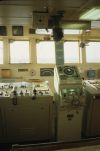 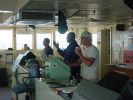 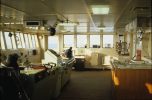 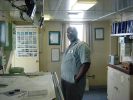
I stood a radio watch, 8 hours out of every 24 while at sea, listening on 500 kHz. This pretty much tethered me to the Radio Room, my adjacent stateroom or the Chartroom and Bridge just forward. I had to be able to hear the radio during the entire watch. There was a workshop just behind the radio room, and I frequently worked on equipment during the watch. I was required to log every significant signal that I heard and every contact made. Daily tests of all the equipment were required, and the results logged. This included a check of the Main and Auxiliary transmitters on the Main and Auxiliary antennas. These four tests required sending the ship's callsign. One could hear other ships' ROs testing their equipment, and occasionally we would call each other, move off to a working channel and chat for a few minutes. It never hurts to get to know the neighbors.
Listening to 500-kHz is a bit like listening to your local simplex 'gab' frequency on Ham radio VHF. Most of the time it's quiet, except for the constant static (sometimes low, sometimes ear-splitting). Every so often someone comes up and tests, or makes a call. When two stations want to chat, one calls the other, and they move off to a working frequency. There were three receivers available, so it was easy to follow them off to the working channel while still listening to 500. Working on equipment while copying code in one's head is a great way to keep sharp. I began copying code with a pencil and paper, and never was comfortable transitioning to copying directly on a typewriter. I'd scrawl the message on a yellow legal pad, then transcribe it onto a clean typewriter copy. Fortunately, there wasn't a lot of CW traffic.
We spent a good bit of time in the Indian Ocean and it's environs. I usually got up around 0530 to check the traffic that had come in during the night. Being half-way around the world meant if we were going to respond to a message before the company folks back in Houston left work for the day (or the weekend), we had to get an early start. More than once, I printed off a message the office had sent us, laid it on the Captain's desk and knocked on his adjoining stateroom door. "Sorry Captain, it's 4:35 PM Friday in Houston. You will want to read the message on your desk." and close the door behind me on my way up to the shack. About the time I arrived there, the phone would ring, "What are they thinking?! Warm up the sat-phone, I'll be up as soon as I get some pants on!" I would already be dialing.
My watch hours were 0800 to noon, then 1500 to 1700 and 1800 to 2000. I started the day sending and receiving message traffic, both civilian and military, most of which was handled by HF teletype. I'd call a commercial shore station, most of which were automated, pull any traffic waiting for us, and file whatever outbound traffic I had. Our unclassified military traffic could usually be filed with a US Coast Guard radio station, located in Norfolk, San Francisco, Honolulu, Guam and Diego Garcia. I also asked for the weather text report for our area, and I might be able to talk the operator into sending us the sports 'tape' for the day. I'd print two copies, one for each mess hall. I'd arrange to have the transmitters off before the weather charts for our area were scheduled to be broadcast, so the radiofax copy came in clear. These were broadcast from the same five USCG stations. I also had general clerk and administrative duties. I would use the time block after lunch (1230 to 1500) to work overtime projects away from the radio room. From 2000 to 2200 I'd either work on a project, read or watch a movie, then crawl into the bunk.

When I was off watch, I was required to activate the Auto-Alarm Receiver, which listened for the Auto-Alarm sequence of "4-second dashes and 1-second spaces for one minute" that set the alarm receiver off. This energized three electric bells, one mounted in the Radio Room, one on the Bridge, and one directly over the head of my bunk. Remember the schoolyard bell that rang for recess? Imagine having that a foot from your head, rousing you from a sound sleep with a continuous ear-splitting peal. If you look at a SOLAS Radio Room Clock, like the example in the picture, it has red dashes painted around the perimeter, in the 4-on/1-off pattern to assist in hand-sending the Auto-Alarm Signal. It also has two red triangles at :15 to :18 and :45 to :48 minutes past the hour, depicting the Morse Silent Periods. No routine transmissions were to be made during these intervals, and all stations listened for a distress call, logging that they had done so, every hour on watch. There are also two green triangles at the top and bottom of the hour for the Radiotelephone Silent Period. Finally, there is an extra (silver) hour hand that is kept on Greenwich Mean Time (GMT). The clock was checked and set daily, wound every Sunday and this was all logged.
While on the subject of clocks aboard ship, I would be remiss not to mention the ritual of crossing time zone boundaries. In the normal course of events, when steaming east or west, one is bound to cross these imaginary lines. Since the entire crew is tied to the clock, standing watches with specific starting and ending times, the subject of changing the time on the ships' clocks is not taken lightly. On a day that the clock needs to be moved forward or back an hour, the task is handled by the night watches. Assuming the clock is to be moved forward an hour, that evening the 8-to-12 watch takes the watch at 20:00. They then move the time ahead by 20-minutes, so it is now 20:20 (8:20PM). The 12-to-4 watch will take their watch when the clock reads 00:00, and again set it forward 20-minutes more. Finally, the 4-to-8 watch will do the same thing finishing the total hour change at 04:00. The 8-to-12 watch will again arrive and take the watch when the clock again reads 8:00. All times recorded in the log and elsewhere will be either according to what the clock actually reads at that time, or in some cases recorded times are tied to Zulu Time (Greenwich Mean Time). When crossing in the other direction, where the clock needs to be set back, each watch again accomplishes this task when assuming the watch. This basically spreads any advantage or disadvantage created by the time change equally over all three watches. And lest you think this only applies to the clock on the Bridge, oh no. There are several clocks around the ship, both mess halls, both lounges, the Cargo Control Room, the Engine Room. It can easily take the best part of half an hour to set them all. Of course, only the REO could touch the Radio Room clock. It got set an hour (ahead or behind) all at once, at about 20:00, just before I headed for the bunk.

Beginning in the early 1990's this "old radiotelegraph" system was augmented with newer technology. A piece at a time became required, and was added to the SOLAS equipment list. The idea was to eventually replace the old Morse code system altogether with a new Global Maritime Distress and Safety System (GMDSS). One thing the new system would do is eliminate the Radio Officer position and turn radio duties over to the mates. This was finally accomplished in 2002, when Radio Officers were no longer mandatory. I feel lucky to be one of the last to work under the old system, carrying on a nearly century-old tradition. I managed to stay employed for four years after my job was officially no longer required. There was not a Captain or mate that wanted to see me go. In the end, though, once the contract the operating company had with the Navy was up, I went home for the last time.
The main reason for GMDSS is to cut costs. The old system was safe, but required a skilled Radio Officer. The new system placed his duties on a combination of machinery and the mates (who generally have no interest in radio and no technical skill, whatsoever). During my last four years, I was responsible for training our new mates in how to operate the GMDSS equipment console. They really only wanted to learn one thing, "How do I shut that #@$% alarm off?" Suffice it to say, that GMDSS is known throughout the shipping industry as "Good Men Die on Sinking Ships."
Ships generally cannot depart from port if they have equipment deficiencies. Much of the American Merchant Marine operates on liner service routes, for example, shuttling cargo between Alameda, CA, and Honolulu, HI. Their repair needs can be handled by having a shop under contract at either end of the run. They know the equipment, have abundant spare parts and even replacement equipment on hand if that's the only way to fix the problem quickly. Any deficiency could be addressed before the ship left on schedule. That model didn't work for the ships I worked on. We called at ports all over the world, including third-world countries and military bases, many where finding a marine radio shop or even electronic components was not in the cards. Our schedule often changed on very short notice, making a skilled electronic technician worth his weight in overtime. Worst case, I'd order parts sent to meet us at the next port. The job was both challenging and interesting.
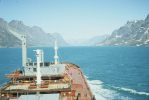
An example of the out-of-the-way places we went would be Kangerlussuaq, Greenland, an air base, 60 miles north of the Arctic Circle, 100 miles inland up rocky Sondre Stromfjord. This is 500 miles north of the southern tip of Greenland, which is itself 850 miles north of the eastern tip of Newfoundland. The fjord is too narrow for the ship to turn around, and too deep and rocky to anchor. This trip was on my first ship, the MV Lawrence H. Gianella, the only ship named for a Radio Officer, a sister ship and nearly identical to the Matthiesen. In 1992 we came to fill the fuel storage tanks in preparation for the US turning this air base over to the Danish government. It was originally developed during WWII, in 1941, as Bluie West-8, as a refueling stop for aircraft making the hop to England. It is now the largest civilian airport in Greenland. Upon leaving, the weather was beautiful, but deteriorated rapidly as we headed down the fjord for the open water of Baffin Bay. Between the low fog and driving rain, and the dangerous submerged rocks at the entrance, it was a wild ride to regain the open sea. While the radars worked flawlessly, they were almost useless. I was assigned to a compass repeater, to maintain eyeball contact on a very small plywood range ashore, which defined the one safe line out, and continuously shouted bearings, as the Captain ran from bridge wing to bridge wing, watching the rocks and shouting directions to the helmsman. After a half hour that felt like a day, we cleared the mouth of the fjord in fog and rain, with visibility of a few hundred yards. There were places we went even more remote, but not many.
Radio was a one-man department, working directly for the Master. I ordered, installed, fabricated, modified, maintained, repaired, and usually operated, everything electronic onboard. I trained new mates on the bridge systems and computers, and got a good deal of overtime out of the Engine Room working on electrical problems. Spare parts were not always available, so I did a lot of troubleshooting to the component level. I've repaired damaged circuit board traces, and substituted suitable components scrounged onboard that would work "well enough" in a pinch. I have engineered and manufactured replacements for parts corroded beyond repair. The manuals filled a file drawer. My first large high-power radars were Atlas-Krupp, with the manuals in German. I wrote up detailed notes on every repair, kept in a large binder, making getting up to speed on return visits much easier. As the supervisor of the department (of one), I signed my own overtime sheet. All such work had to be justified, and any over my daily quota approved by the Master or the Chief, but there was always plenty that needed to be done. I had a reputation as a troubleshooter and repair artist. I would sign onboard for a work tour and as soon as my relief left, the Chief was in my office to talk about the long list of things that needed attention. There is little to do at sea for fun, so you might as well work. We were all there to earn money, after all. There was always plenty to do. Click here for a story in .pdf format
Keeping secrets was part of the REO's job. Among other traffic that passed through the Radio Room, any time we were to meet a Navy ship, everything about that was always classified at least until after it had happened. Even some routine traffic concerning vessel operations was classified. Only the Master, REO and Mate had clearances. Only the Master had the right to know everything. My policy was not to tell lies. Lies are too complicated, and undermine your credibility, which is important. Better to just not say anything at times. On one voyage for example, we arrived in Pearl Harbor from the West Coast. The day before we arrived, our orders for the follow-on voyage arrived. The scuttlebutt was we were heading back to the West Coast. Everyone, including me, got ashore to enjoy a day or two in Honolulu. Hawaii is a Stateside port, where any member of the crew is free to quit, and leave the vessel, if they choose to. If sailing to or between foreign ports, everyone was lawfully compelled to stay with the ship until properly relieved (replaced). Only the Captain and I knew where we were going. No one else knew until two hours after we sailed the next day, when the "Old Man" announced we were heading for the Persian Gulf. I know half the crew would have jumped ship had they known. It can be a lonely job at times.
We spent a good deal of the 1990s in and around the Persian Gulf. We would load cargo from a number of ports in Bahrain, Saudi Arabia, and the U.A.E., keeping the oilers stocked and also meeting individual ships from time to time. One evening we received a classified message ordering us to meet a US Navy ship the next morning in the Arabian Gulf, just outside the area in which we had been working. At first light we reached the specified location, expecting to pace the ship and transfer fuel as was our normal routine. The orders had been fairly vague, and I manned the flashing light to ask for fuel type and quantity. Instead, the reply was a request for us to go dead in the water and expect a boat alongside. The boat brought a Navy officer with charts in a tube and folders in a briefcase. It seems that the oiler intended to support the ships involved with the UN "Police Action" in Somalia was delayed due to a mechanical casualty, and we were off to pinch hit for them. The east coast of Africa is not a place we would normally spend a lot of time, and sailors bore easily, so an adventure to a new place is usually welcome. The down side was, there would be no port calls, and therefore no crew reliefs until our stint was done, and the ship went somewhere with a civilian airport. So, we were all in it for the duration.
The ship spent several months off the coast of Somalia, providing fuel to a number of ships from a variety of nations, in addition to our own. Although we got the occasional day off, we more often were servicing two or three vessels a day, and sometimes as many as nine. One morning, we received a message requesting a fill-up from a Canadian ship, running to several pages. Looking it over one could follow this request from the ship, up the Canadian afloat command, to Ottawa, around headquarters, then to the US Navy, where it was reviewed (stamped and signed) by several offices, before coming back down the chain to us, days later. I handed it to the Master, who wrote down the latitude, longitude and date/time of the rendezvous, which he handed to the Second Mate. Just another routine underway replenishment. Until, that is, the Second Mate noted that the position given was in the highlands of Kenya. Well, if you used South Latitude instead of the North Latitude that was listed, that would put the position where it probably should be, comfortably offshore. BUT. One does not assume. The Master asked me to check it out, just to be sure. I placed a satellite call, and in a few minutes I was talking to the originating officer. We switched our phones to "secure mode" and he asked what this was about. I explained the apparent latitude mix-up and got a moan as a response. "Do I have to resend the request?" He asked, sounding like a condemned man. I answered, "Oh, no! Just confirm the position, and we'll see you in the morning." I've never heard anyone sound more relieved. This 'cut the BS and get it done' attitude was praised in our after-action performance review.
When preparing to part company, it was not uncommon for the captains of the two ships to exchange gifts. This usually took the form of a couple of ball caps with the ships' emblems, or similar memento. One of the vessels we replenished, an Italian supply ship, sent over a few bottles of wine. American ships are 'dry', no alcohol allowed. The Master didn't want to snub the other Captain by refusing the gift, but this left the problem of how to dispose of the contraband. That night at dinner, glasses were set up on a counter in the serving line, filled about half-way with the illicit beverage, one per crew member. Those with watches left to stand saved theirs for after. There are no witnesses where there are only co-conspirators.
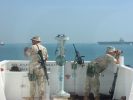 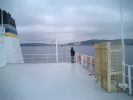
After 09/11/2001, the Department of Defense looked into "pinch points" where the Navy was potentially vulnerable to terrorist sabotage, and fuel supply rose to the top of the list. We soon had armed guards while in port, and occasionally between ports or when in "sensitive areas." Even our routine movements were classified beyond 6 days into the future. On one voyage, we left Kwajalein Atoll, in the Marshall Islands, heading for San Francisco Bay to load, and our Shipping Agent there started sending messages asking what day we would be arriving. We were still almost two weeks out and the messages started to sound desperate. He had a legitimate need to know, in order to arrange tugs and line-handlers, not to mention stores and crew reliefs. Finally, the agent called on the satellite phone, asking for the Master. When the agent asked what day we would be arriving, the Captain slowly and carefully said, "I cannot divulge our ship movements beyond six days into the future, so I cannot tell you what day we will arrive, BUT, I will be able to tell you, next Tuesday." Long pause while the agent figured it out.
Food is always important. The ship carried a 4-person Steward's Department, consisting of a Chief Steward/Baker, Chief Cook and two General Service Utility (GSUs). The Steward planned the meals, ordered food and supplies and was in overall charge of the department. He prepared breakfast, baked goods and desserts and helped serve dinner. The Chief Cook prepared lunch and dinner under the Steward's direction, and served both meals. The GSUs did the minor preparation work, helped with serving and washed up. Meals were served "cafeteria style". One drew a tray from a stack, and utensils, and joined the serving line. The menus were posted in the galley each morning before breakfast, which was short-order, pretty much whatever you wanted. Eggs, bacon, ham, sausages, breads & rolls, pancakes; normal fare, cooked to your order. Beverages were coffee, tea, ice-water, cool-aide, milk, juices; the usual. There was a selection of cereals in a cabinet in the dining areas. If you wanted something special, you could ask the Steward. If he didn't feel like including it in the next order, you could buy your own while ashore. Lunch and dinner were always two entries, at least one hot. They were ordered from the menu (posted in the serving line). If the menu boasted prime rib, baked ham and roast turkey with all the trimmings for both lunch and dinner, then it was either Thanksgiving, Christmas or New Years.

The officers ate in the starboard mess hall, the crew in the port mess hall. If the weather was particularly nice, we might stage lunch or dinner as a Barbecue on the stern deck. The food quality was generally good. Most of the provisions came aboard as a 90-day order. At each port we tried to get "FFV", Fresh Fruit and Veg. These items came aboard as a few-days supply. When exhausted, we would be on canned or frozen. This also extended to milk and a few other items. We would take on enough fresh milk to last 2 to 4 weeks, and freeze most of it in the walk-in freezer room. Each day, the galley crew would move a few cartons to the chill box. On long voyages, when this ran out we would use Ultra-Long-Life milk that had been super pasteurized. This was universally referred to as "dog's milk", and tasted like chalk mixed into Elmer's glue. Given the choice, most would use dry creamer in their coffee, or none at all. Our juices were canned or frozen. The water came from an evaporator in the Engine Room, as pure distilled water. It had absolutely no taste, made great tea and coffee, but would not lather in the shower.
One time we were cruising in the North Sea and English Channel area, and had an English Channel Pilot on board. He was a very proper, nice and knowledgeable "chap". A true English gentleman, he spoke with a very deep accent. On this occasion we had a Chief Cook from Louisiana, with a very thick Southern drawl. The Pilot joined the dinner line and when it was his turn, asked for his selections in a clear, if accented, British voice. The Cook stared at him blankly and replied, "Caint chu speak anglish?" The fellow behind the Pilot in line cleared his throat, and said, to the Cook, "Lonny, he IS English."
The Captain administered a "Ship's Fund", for morale. This grew at $200 per month. We usually bought movies (VCR and later DVD) when we could get to a Base Exchange. We also frequently won the fleet Safety Award, of $500. Some ships would spend the money on T-shirts and caps, but our Captains got permanent stuff for comfort on the ship. There were TV sets in the crew and officer lounges, and many of us had them in our rooms, but they were American sets, useless abroad for off-air shows. Once, while sailing the Mediterranean Sea, when our balance hit $1500, the crew lobbied for "all-scan" TV sets in the mess halls so they could watch European programing. I picked up two large International TVs at the Rota (Spain) Naval Base Exchange. The engineers built stands to hang them up in a corner of the Mess Halls. I ran cable and power to the perches. We turned them on and were getting Greek soccer and Italian soap operas. "What did you expect," I quipped, "CNN in English?" Next morning we discovered that the Italian National Network broadcast, from midnight until 6:00 AM every day --- (wait for it), --- CNN in English. --- Go figure.
The GSU was an entry-level position, requiring almost no training beyond basic safety orientation. The pay was minimal, but room and board were included, and one has to start somewhere. There was one captain in our fleet who had started as a GSU and worked his way up. In addition to the galley duties, the GSUs would split housekeeping chores. The officers had their (queen-size) beds made each day, clean sheets once a week, and stateroom vacuumed at least once a week. The officers each had a private "head" (bathroom; stall shower, sink and toilet) adjoining their stateroom, which was cleaned daily. The crew each had a private room, shared a head between two rooms, cleaned it themselves and made their own (twin-size) beds.
The dry stores food locker was generally unlocked at sea, as were the chill box and freezer rooms. One of the first things one would do when signing on a ship was to go look at the peanut butter supply. If there were many cases on hand, the cook was probably a good one. If the peanut butter was in short supply, the food might be inedible, and one would go ashore and pick up a few staples to get by on. We had one cook, named Tom, who really knew his stuff. He prepared meals to tempt the palette. Whenever Tom was on board we all gained about 20 pounds in 4 months. One tour, when the Steward went home on vacation, Tom moved up to take his position. The desserts he produced every night were unbelievable. None of us could resist. There were also cooks who sent us all to peanut butter sandwiches in our rooms.
The other entry level job onboard, besides the GSU, was the Deck-Engine Utility (DEU), who split their time between working for the Mate on deck, or the Engineers in the Engine Room. In the Age of Steam, they would have been called a "Wiper". Their work included chipping and painting, oiling and wiping, and a lot of cleaning up and "assisting". They were always part of the deck crew for arrivals and departures from port, handling lines and hoses, as were the GSUs. As with the GSUs, the main draw of the job was building sea time in order to advance, either to AB or QMED. We carried two DEUs. I got to know some of these folks and a few were homeless, or one step from, before showing up at a union hall and going to sea. There are still judges who will give an offender the choice of go to sea or go to jail. They worked 4 months on and 2 months off, had no expenses while at sea, three square meals a day, a warm dry bunk in a room of their own, and got to go ashore in some interesting places, with money in their pocket. They could pick up another "temporary" 2-month job on their vacation, or take the time off.
While an unlicensed crew member could work their way up from an entry-level position, and eventually earn enough sea-time to qualify to sit the exam for a Third Mate or Third Engineer's license, and thus join the officer ranks, the more conventional route to this position is to attend a Maritime Academy, of which there are several. Upon graduation, after what amounts to a 4-year college program, one receives a degree and sits for the exam for either a Third Mate or Third Engineer's license. One Academy in particular, the United States Merchant Marine Academy at Kings Point, NY, is a federal Academy, with similar standing to West Point, Colorado Springs or Annapolis. A High School graduate with good grades can apply for a Congressional Appointment, with his or her Congressional Representative. If they secure the appointment, they can receive a 4-year college education, with some interesting sea voyages for summer vacations thrown in. Not for everyone, but if you know a kid who is eligible and wants a nearly free college education, it's pretty hard to beat. ---I'm just sayin'.
Cadets are Academy students, working on a ship for 3- to 6-month tours as part of their education. They generally come in pairs and have a workbook that is graded and signed by an officer as they complete various tasks. These are not necessarily 'make-work', but can actually be part of the ship's workload. Smart cadets work hard and try to learn as much as they can. Time on a tanker can earn them a Tankerman's Certification, required later to work as an officer on a tanker. Some deliberately don't avail themselves of this, thinking they will only work on a container ship. The smart ones know that jobs are scarce, and a job on a tanker can pay more. We had cadets that came to work, and those that came to play. We had a few that showed you can work hard, and still find time to play. These got the glowing recommendations.
One cadet in particular, nicknamed 'Sonny', was a hard working, responsible kid from California, who wanted to work on tugs. He did the required cargo work to earn his Tankerman. We were sailing the Med at the time. Even with the cargo watches, he managed to find time to get ashore, taking the train to Naples and Rome while we were in Italy, and Toledo and Madrid by bus in Spain. We ended up in Marseilles, France, with a slow load that would take at least 3 days. He asked what there was to see here. The Mate, as it turns out, liked to vacation in France. Sonny got a map, a list of things to see, which trains to take (including the TGV) to get to Paris, the name of a hostel six blocks from the Louvre, a backpack full of sandwiches and sodas, spare cash out of at least three wallets, and the satellite phone number to call the ship if he got into a jam. He took off on foot for the mile or so to the local train station and when he returned the morning of the third day, was floating on the biggest smile any of us had ever seen. Tugs --- well, maybe.
Fremantle, Australia is a really interesting city, on the Indian Ocean. I have arrived from home there to get on the ship, left the ship to return home, and stopped twice during a tour. We were there to top up the bunker tanks on the way to Antarctica. The first time I was there was a 4-day layover on New Years weekend (a summer holiday here). What can I say, Aussies take holidays seriously. They brought us in to the dock on Friday, and said we were stuck until Tuesday morning when the bunkering would begin. The Second Mate, 'Mick', was of Irish extraction and I joined him in the early afternoon, for a look-about ashore. We walked about four blocks away from the waterfront and came upon "Clancy's", an Irish pub. Walking into the place we were welcomed by Maureen, of the long flaming red hair, from behind the bar. She asked if there was anything she could do for us, and Mick asked for a Guinness. I asked for a Swan Ale. She drew my Swan from the tap and set it before me. She placed another glass under the tap and ever-so-slowly, patiently drew a dark Guinness without a trace of a head. As she placed it before Mick he said, "That's it, Sparks. I won't be moving from this spot until we leave." Maureen asked what we were doing for the holiday and invited us to the party that started that evening. We were both back. Live music (the Press Gang) at high volume with everyone in the place either dancing or tapping a foot. The children were brought in and parked at the foot of the stage while the parents made merry. I left about midnight when they'd barely started to get wound up. As I say, they take their holidays seriously down under.
The last time I was there, was an 8-hour stop to bunker. That really meant less than six hours, because no one can leave until the customs/immigration folks have finished and everyone has to be back aboard at least an hour before sailing. The two cadets were whining that there wouldn't be any time to see the place and they wouldn't know what to do anyway. The Captain suggested they tag along with me. As soon as we cleared customs, I bummed a ride with the customs inspector into town, and the three of us piled in. He dropped us downtown. We visited the Victorian Sheds where there is a Farmers Market and craft vendors on weekends, including opals (raw, polished and in jewelry), hand-made fir-felt hats, clothing and crafts of all descriptions. Then on to a nice restaurant for lunch, with outdoor seating, taking turns burning up 10-minute phone cards at the booth across the street to call home. When I ordered a beer with lunch, I pointed out the drinking age here was 18, and I was buying the meal. Although probably not their first beer, I think it was their first one out in the open, with a casual lunch in town, with people strolling by. Then a walk down to the marina, by way of several interesting tourist shops, to get ice cream cones and stroll around the Esplanade park. We looked over the variety of sailing yachts in the marina, went through the old fort, the Maritime Museum, and strolled through the Customs Sheds, an historic site now made into small boutique shops. Finally, we caught a cab back to the docks arriving an hour and 20-minutes before departure. The two cadets (one male, one female) had several shopping bags of goodies each. I had a pair of opal earrings in my pocket for my Sweetie.
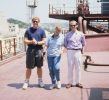 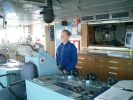 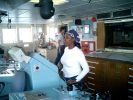 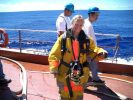
I should interject here that I use the male pronoun when the gender is unknown or unspecified. That's the way I was taught, and I certainly don't mean any bias. The fact is there are relatively few women sailing in the US Merchant Marine. While they were once unheard of on ships, they are now only rare. More women are finding careers at sea all the time. It is an uphill path in some respects. The hours are long and lonely. The work is hard and can be dangerous. I have sailed with a number of women who love the work and do it well.
In the Engine Department, we carried two Qualified Member of the Engine Department (QMED), who were basically mechanics, disassembling and assembling, cleaning and repairing the hundreds of pumps, valves, hydraulics, pneumatics, fuel, air and other systems. There were four grades of QMED, depending on training and experience. They would frequently miss going ashore while in port, that being the only time the propulsion machinery was shut down. There were three officers. The Second Assistant Engineer checked all the gauges, meters, graphs and levels, recording all the data required to watch over the health of the machinery. The First Assistant Engineer (First) supervised all those working in the Engine Room. The department was overseen by the Chief Engineer (Chief), who is responsible for the well-being of the physical plant. While the Master may over-rule the Chief, he does so at his peril.
The Deck Department included one Bosun/AB, and five Able Bodied Seamen (AB). They were deployed two to a watch. During daylight hours, one would stand the bridge watch, while the other worked on deck. Two hours into their 4-hour watch, they'd change places. At night or bad weather, they both stood the bridge watch. When not on watch, the ABs could work up to 4 hours of overtime per day. There were several grades of AB. We also carried a QMED/Pumpman, who did the mechanical work for the deck department. He repaired and replaced valves and pumps, and did the work of managing our ballast water. The rest of the Deck Department consisted of licensed officers, Master, Chief Mate, Second Mate and Third Mate. The Chief Mate, called "the Mate" is the ship's Executive Officer, and Cargo Officer. Traditionally, he stood the "4-to-8 watch". This is 0400 to 0800 and 1600 to 2000, considered the best watch. The Second Mate is the ship's navigator, and traditionally stands the 12-to-4 watch. In addition to minding the navigation chores for the present voyage, he had to maintain our collection of charts that covered the entire world, with all changes and corrections up to date. I knew several Second Mates that were perfectly happy not to advance further. The money was good, the work was steady, and it was as high up the ladder as one could climb without having to supervise a lot of people. There was always at least one mate on the bridge at all times while at sea. Whoever was on watch was the officer in charge of the ship.
The Third Mate stood the 8-to-12 watch, was the ship's Safety Officer and also our Medical Officer. He wasn't a doctor, he just played one on TV. Part of the training for licensing was what amounted to a First Aid course level medical orientation. He applied iodine and Band-Aids, and doled out aspirin and Tetracycline tablets. My volunteer firefighter EMT training seemed to trump what the mates had, so I was often pressed into service to take vitals. Anything remotely serious got the Master's attention. He received a medical seminar once a year, and had seen a lot more than a green 3rd mate. If there was a real problem, we would call our contract medical service on the satellite phone. Our medical supplies came from the same service, so they knew what we had on hand. Prescribing drugs was a matter of taking two pills from container #174 twice a day for a week and call back if it didn't get better. The service worked out of an Emergency Room at an east coast hospital, was staffed 24/7 and always answered by the second ring. Considering how cut off from the world we usually were, this was reassuring. I have seen Masters calmly stitch up lacerated arms, splint broken fingers, and lance boils the size of golf balls.
Once, in the Gulf of Mexico, a day after rounding the tip of Florida heading for Houston, two days away, one of our GSUs complained of chest pain. He was sweating and cold. Fearing a heart attack, we put him on oxygen and called the medical service. They took about a minute to verify our diagnosis and called the Coast Guard directly. The USCG from New Orleans called us, asked for our position, then asked us to turn north, and guard a 2-MHz frequency. I dialed up the radio, and soon after they launched, was talking to a helicopter flying south toward us at full speed. I passed our position to them every 15 minutes. Almost two hours later, at nearly the limit of their range, the helicopter arrived overhead, winched down a medic who hooked a monitor onto our patient. After a quick assessment, we loaded our guy into their litter, and they were both hoisted aloft. The aircraft turned for home, and we returned to our course for Houston. We later received a message confirming the fellow had indeed experienced a heart attack and was recovering satisfactorily in a hospital ashore. Remembering an incident like this, when we were somewhere in the trackless ocean half-way from nowhere, made one realize how much you give up when you cut yourself off from the rest of the world, and its modern miracles.
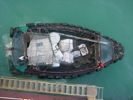
When operating in the Far East AOR, we would sometimes do crew reliefs with a 'Singapore Fly-By'. This meant slowing to about 8-knots while following the Singapore Straights through the harbor area, while a small 'Bum Boat' came alongside. A line was lowered and suitcases tied to it, to be hauled to the main deck while the crewmember-owner climbed up a rope ladder. He would meet the person he was relieving, who would then tie his bags to the line and descend the rope ladder. Once the Chief Mate was relieved this way. The new fellow coming aboard looked terrible. He had picked up some sort of illness on the long plane trip from Florida. I signed him aboard and he went straight to his bunk to sleep it off. The next day the two ABs who had helped him with his baggage were down, and the Third mate was queasy. The next day, I was unable to get out of my bunk, feeling miserable and unable to open my eyes without getting nauseous. That evening the Master came to my room and said the SatPhone wasn't working and he needed to call our Medical Service. He said half the crew was down with he and the Second Mate standing the bridge watch in six-hour shifts. He was worried that if anyone else got sick he would be unable to safely handle the ship. I dragged myself out of the bunk, into the Radio Room, and spent a few minutes moving the satellite antenna aiming from the Pacific bird to the Indian bird and locked it on. Once established on an accessible satellite, the phone worked fine. The Medical Service said it sounded like a virus, liquids and rest and it should pass. By day 4 we were over the worst of it and people were starting to come out of it. Fortunately, we had a week-long voyage to get ready for the next port call, when all hands would be required. This highlighted the fact that a Merchant ship is minimally manned. There are no extra hands aboard.
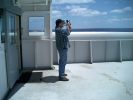
Global Positioning System (GPS) has, of course, revolutionized navigation, and we used GPS on the bridge. Originally we used a Transit SatNav receiver. It used 5 satellites (to GPS's 24) and gave a fix about once an hour. Once GPS was fully implemented (1995) the old Transit system was decommissioned. Positions were plotted every half-hour at sea. Most of the Masters I sailed with required the mates to take enough celestial position fixes to keep that skill polished. The Third Mate would take a Noon Sight, every day he could see the sky, before being relieved by the Second Mate. These celestial fixes were usually within a few miles of the GPS positions. Before electronic navigation, ships positions were rarely known with accuracy better than a few miles, when out of sight of land. When a fix wasn't available, the ship would dead reckon by keeping track of speed, time and direction. None of these can be known very accurately with only resources on board. After days without seeing the sky, a ship might not know its position better than 50-miles or more. With GPS, positions are known to a few feet. Fixes come automatically, several times a second. They no longer plot the position of the ship, so much as the position of the bridge. The universal use of GPS has caused some interesting side-effects. When laying out a great-circle course across the trackless sea, the 2nd mate uses a series of straight line segments, connecting arbitrary waypoints, to closely approximate an arc. These tend to fall on cardinal lat/long intersections in the open ocean for convenience. Of course all Navigators do the same, and always have, but with the precision of GPS, however, comes an increased likelihood that ships will actually cross these cardinal intersections, causing the occasional collision. Many Masters today are leery of such places. It's almost like a superstition. When approaching such a waypoint they will wander up to the bridge and look around, or leave orders that the waypoint will be given a wide berth.
On one voyage, from Kwajalein we departed for the two-week run to the Seattle (Puget Sound) area to load. Part way along, our orders were revised to go to Long Beach, CA instead, necessitating a course change. This put us about 10-miles off the north shore of Oahu while transiting the Hawaiian Islands, and everyone was out on the landward rail calling home on their cell phones, a very nice break in the middle of the voyage. On a subsequent return voyage, from the Seattle area to Kwajalein, the Master was reviewing the course on the charts with the Second Mate and noted the great circle route put us over 150 miles away from any of the islands traversing Hawaii. He asked what changing our course to slip in close enough for cell range would do to our overall voyage time. After some calculations, the mate answered that it would add 4 hours over two weeks. The Master ordered the course changed. This became a topic on many subsequent voyages. Technology creeps into our lives and quickly becomes part of the landscape. We all too quickly forget what it was like previously. In less than 20 years, we have gone from sextants and star-shots to GPS, from Morse radiotelegraphy to satellite telephone, and from walking three miles to use a pay phone to having a cell phone in your pocket that works from your stateroom or the bridge wing in port.
A cellphone is basically a radio transceiver. They're handy in a harbor, but have a lot of limitations when it comes to using them offshore from a ship. Often one bar would flicker tantalizingly, tempting you to try a call. The signal was rarely enough. The biggest cellphone limitation is the antenna. Our ports (windows) were about a foot-and-a-half wide, two-and-a-half-feet high, and recessed about a foot into the bulkhead (wall). Using corrugated cardboard from boxes, I laid out parabolic curves, slotted the cardboard sections to fit together like an 'egg-crate', and formed a rectangular plug just the size of the port, with a parabolic dish back surface, which I covered in aluminum foil, protected with duct tape. There was a hand-size hole cut in the back leading to a pocket which held a cell-phone right at the focus of the dish. Hook up your hands-free ear-piece, and this provided enough gain to frequently allow calls from well offshore, when unaided phones 'got nothin'. While I got lots of eye-rolling, smirks and chuckles while I was building this, there was no lack of interest in using it once it was available. Science and Math are handy things.
In later years we carried two Third Mates, and the Chief Mate no longer stood a bridge watch. The Mate, as Cargo Officer, has to directly supervise the finishing of cargo operations. He has to "fiddle" with the pump controls as the tanks empty to pull as much cargo as possible without sucking air, or carefully put the last of an on-coming load where it will best balance the ship. He personally draws samples as the cargo nears the end, to be cataloged and stored for a year onboard. He personally determines the amount of cargo either taken on or discharged, and certifies to the US Government (DOD) and usually port officials that the figures are correct. He supervises the disconnection of the hoses, ensuring nary a drop of oil falls overboard. That last three or four hours can be very busy and exhausting. But what if that time comes during the period when he would otherwise be resting, before his normal watch period. One of the new regulations to come out of the Exxon Valdez incident was a requirement that, before taking a navigational watch, the watchstander had to have the opportunity to rest for 8 hours. On a few occasions, when this happened, the Master took the ship off the dock and directly to anchor in the harbor for 8 hours, before departing for the next port. The economics of this down time pushed the operating company to hire a second-Third Mate, thus relieving the Chief Mate of the navigational watch and speeding the departure operation. The Mates didn't particularly like it, because it cut into their overtime, but things were definitely safer.
The Master, addressed informally by his first name, which is always "Captain", is in overall charge of the vessel. I believe the expression is, "Only God outranks a Captain on his ship, and then only if He personally appears aboard". When the Master says it's "his" ship, he means that literally. The Master is personally accountable for every person, part and provision. He is responsible to make sure nothing goes wrong. While some Masters may solicit the opinions of their officers occasionally, there is never a vote. The Master's decision is final, absolute, and unquestioned. Any serious problem with the ship, or its cargo, can easily loose the Master his job. A good Master knows how every job on board should be done. A smart Master then lets everyone do his job without interference. It is said, the Master of an oil tanker has more education and experience than a brain surgeon. At a minimum, this would be 4 years at an academy, and two years each as a Third, Second and Chief Mate. Then there would be the long wait for a Master's billet to become available. When coming onboard, each crew member signs a contract with the Master, to obey, without question, any order given by the Master, even when that may involve risk to one's life. That goes back several hundred years, but is just as binding today.
Never call a ship's Master, "Skipper". Boats have Skippers, ships have Masters. Oh, and NEVER say, "That's not the way the other captain does it." On paper, the Master is the highest paid member of the crew, with the Chief just behind. These two are salaried, receiving no overtime, however, they did receive an "in-and-out" for a port call. The Master has to be on the bridge, and the Chief Engineer in the engine room for the entire time from the sea buoy in to the dock or moorage and also on departure. These two passages are the most dangerous for the ship. The likelihood that a condition might arise requiring split-second decisions by these two senior officers is highest during these periods. The additional compensation was almost a half-day's pay. When we engaged in ship-to-ship replenishment maneuvers, they got an "in-and-out" for each ship we refueled. Occasionally, that could be as many as eight or nine ships in a day. Cha-ching!
In actuality, the Mate and First could make more than the Master, as they got overtime for everything past their normal watch periods. The REO was compensated at the same pay scale as the Mate, including overtime, paid for any work beyond the normal 8-hour radio watch. Everyone had an overtime quota that only needed department head approval. Beyond that required the Master or Chief to sign. In the case of the REO, it was 2 hours per day. I usually found 2.5 to 4 hours (or more) of stuff to do that the Master would approve. I frequently more than doubled my base pay in overtime. This didn't include "invisible" projects that were done for fun. Being handy at fixing all things electrical was a highly prized skill in short supply. Weekends and 12 holidays a year, if we were onboard those days, were paid at our overtime rate for the day. For every day aboard, we also earned Vacation Allowance, about $50 per day. When finishing a tour of duty, and going home for a 4-month vacation, we would draw our Vacation Check from the Union. This arrangement ensured that one would remain paid up on dues and assessments (which were deducted) with our Labor representation. A portion of my vacation checks over the years was invested in constructing the BeachNet system. An RO, Radio Operator without the technician part, was paid Second Mate wages and virtually no overtime, unless called to send a message out of regular hours.
On one voyage, in the Far East AOR, I received a lengthy mil message from the Navy LCDR newly in command of our Supply Group, relating how the several ships under his command were all displayed on a computer screen on his desk, with positions updated every 4 hours. Ours was only updated twice a day, as I sent in morning and evening positions, pretty much the first and last things I did each day. It went on to say hence forth and forthwith, we would send position reports every 4 hours while underway. I took the message to the Master and asked him to confirm that I was now the highest paid person on board. He read it and agreed. Each of those reports, outside of my normal watch hours, would be a 2-hour minimum overtime call-out per union rules. At the Master's request, I sent a reply to the LCDR under the Master's name, explaining the situation and asking for confirmation the Navy was authorizing REO overtime at several hundred dollars per day. I never saw a reply to a message come back as fast as the one canceling his previous message.
On our arctic and antarctic voyages, the company would supply an "Ice Pilot". The Master is required to be on the bridge whenever the vessel is in danger, or maneuvering in close quarters. The sea ice was a very real danger, and much of it was at close quarters during these voyages. Obviously, if the ship will be in these conditions for days or weeks, the Captain will need someone to spell him. The Ice Pilot was one of the other Masters who would give up part of his vacation for this duty. With five ships in the fleet, there were ten Masters in the pool, five of which would be on the beach at any given time. He was well compensated for this. Sometimes, the Ice Pilot would be the "other" Captain from our ship, who might have been the Master only a few weeks ago. In any case, the Ice Pilot was never confused with the Master. There is always ever only one Master.
 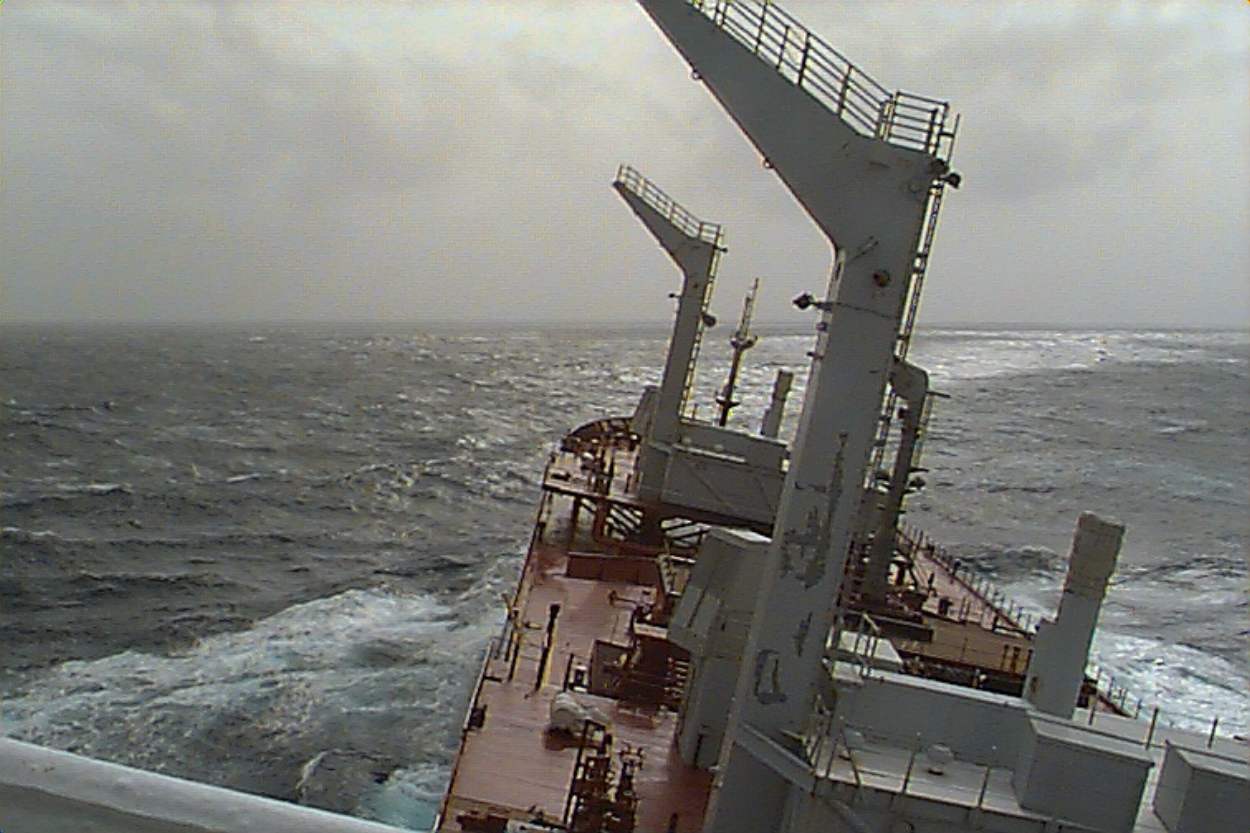  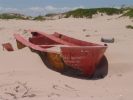
Weather covered the spectrum from clear-warm-and-beautiful to downright frightening. I gathered whatever information was available. The Masters all liked weather charts and satellite pictures, available as radiofax transmissions from USCG radio stations. These took 15-20-minutes apiece to come in. You had to be on top of the schedule, and avoid HF transmissions while they were being received. Resources varied greatly from place to place. The Navy provided us with guidance, but every Master preferred to have the raw data and made up his own mind. In the Gulf of Mexico, one stormy night, a rogue wave slammed into our port side, smashing the railings and electrical conduits along the deck, and removing the port lifeboat, leaving twisted davits and broken windows in its wake. When we reported the loss, the company folks read us the riot act about being more careful to stow and secure the boats. That is, until we sailed into Houston and the Operations Manger saw the damage. A couple of years later, I was contacted by a couple of vacationers near Galveston, TX, who found the remains of our boat on the beach. Never turn your back on the ocean.

Once, sailing from Guam to the Mediterranean, by way of the Suez Canal, during the height of Monsoon Season, the weather outlook for the Indian Ocean was abysmal, with much tropical cyclonic activity. We transited near the equator, warm, sunny, and quite pleasant. Upon approaching the African coast, we turned north, heading for the Horn of Africa. Hour by hour the weather built to hurricane level. As this was on our stern, it pushed us along, not seeming particularly bad. Until, that is, it was time to make the left turn and sail across it to head into the Red Sea. The Captain ordered a left turn, and the helm went over. As the ship rolled into the turn, the weather hit us broad on the side and rolled the ship right on over to the rail. The Captain immediately ordered a hard right that got us back on our original northerly course. The ship had rolled over more than 70-degrees onto the starboard rail, three times before coming back upright. Even though he had asked for everything to be secured before the turn, we had stuff everywhere. The good news was that we were in ballast (empty/no cargo) at the time. Had we been loaded, the ship might have continued right on over. More than a ship a day is lost somewhere in the world, simply never heard from again. We continued north for the rest of the day before turning back into the teeth of the gale, sailing at an angle to the wind to get into the Red Sea. Never a dull moment.
On one trip south from Greenland, off the Labrador coast, the weather charts looked ugly. There were intense storm systems to either side of our course, and one right in the middle. The Navy folks suggested we increase speed to 25 knots and we might just sneak ahead of the worst of it. Unfortunately, our speed tops out at 16 knots. So we hunkered down, banging our head against the wall at about 8 knots to maintain steerage. As dawn broke, the lookout on the bridge noticed the hatch in the foredeck was partly open. Normally dogged down, this was bad news. The waves coming over the bow would fill the forecastle, the large room below the deck where the mooring lines were stored. This would create a tangled mess out of thousands of feet of expensive (and buoyant) 10-inch circumference braided mooring line, which would have to be chopped into 3-foot pieces to come out. The Mate, Bosun and one of the ABs got ready to go forward. The ship was put about, turned to run with the wind, sheltering the bow just a bit. The three men raced forward. Using two chain hoists they secured the hatch (the dogs had been damaged by the waves) and raced back. We turned the ship again to face the storm, and continued on our way. Total distance made good for the 24 hours, 4 miles.
We received safety alerts routinely. We were used to weather reports where the "hurricane will turn and veer safely out to sea," but there was always a detailed track specified. I remember one particular alert regarding a satellite that was being decommissioned. It said something like, it would be "de-orbited and fall safely out to sea." For us, this begged the question, out to sea, WHERE! Avoiding weather was one thing, but the thought that a piece of space junk might fall out of the sky to smash into us arbiltrarilly, gave us all pause. Of course, even if we had known where it was likely to hit the surface, there wasn't much to be done to avoid it. The next time you hear a weather report that ends with the storm heading "safely out to sea", remember those souls riding steel ships, likely being tossed around in their bunks on the not quite empty sea.
Cruise ships use stabilizers to keep the vessel upright and fight any tendency to roll, providing a smooth ride for their guests. A tanker ship has none of that. In fact, rolling with the seas reduces the stress on the hull. So the ship was almost always rolling to a greater or lesser extent. This was driven by the period of the waves and the natural tendency of the hull to roll at a particular rate. While the actual size of the waves had little to do with the tendency to roll, the closer the wave period was to that of the hull, the more violent the rolling. Turning the ship to change the angle with respect to the waves could profoundly change the severity of the roll, for better or worse. Normally, one didn't notice the roll, and got used to walking within a structure constantly moving in three dimensions, called "getting your sea legs". As the roll increased, one might start holding the grab-rails occasionally to steady yourself. The table cloths at meals would get a dousing from the water pitcher. With the cloth soaking wet, the plates and glasses wouldn't slide around. As the roll rate increased, one had to hold the plate with one hand and eat with the other. In the stateroom, the life jacket and survival suit were removed from their locker and stuffed under one side of the mattress to keep you pinned against the bulkhead. In extreme situations, meals were sandwiches and one threw the mattress on the deck and wedged it into a corner to try to get some sleep without being thrown out of bed.
One generally has to accumulate a particular minimum amount of sea time before being qualified to advance to the next higher rank. Sea time is actual time at sea. Laying alongside a dock generally doesn't count. One needs a certain amount of sea time employed in a particular rating before being allowed to take the exam for the next rating. Some of these are USCG exams, and some are union schools/exams. It takes more than a year to earn a year of sea time. In my case, I needed to sail 6-months on a commercial ship under an REO to get rated to sail on my own. I sailed 4-months (and a couple of weeks) with Mike on the MV. Lawrence H. Gianella, and a little over 4-months with REO Roger on the MV. Samuel L. Cobb, to accumulate 6-months at sea. At the end of that period, I sent a copy of my logs and evaluation letters from the REOs and Captains under which I sailed to the FCC. In a couple of weeks, I received a new license, with my Ship Service Endorsement, allowing me to sail on a commercial vessel as the sole Radio Officer. A few weeks later I was boarding the MV Lawrence H. Gianella once again. This time to relieve Mike, and start the adventure of a lifetime.
The accommodation, or "house" on the ship was divided into a series of decks (floors) like an apartment block. The deck at the level of the ship's main deck, housed the cargo control office, and several utility rooms --- The next deck up, the 01 Deck, housed the galley, mess halls, food storage, medical treatment room, exercise room, and three Riding Crew rooms. --- The 02 Deck housed the crew quarters. --- The 03 Deck housed the officer's quarters. --- The 04 Deck was smaller in footprint, with a 15-foot wide open deck on each side and a 10-foot deck aft. The navigation bridge, where the ship was controlled, occupied the forward portion of this deck. Behind that was the chartroom. Behind that was, on the port side, the Radio Room, and the starboard side, the Radio Officer's stateroom. --- The freshest coffee on the ship was always available on the bridge, and except in port, the officer in charge of the vessel was always there as well. In port, the officer in charge would be found in the cargo office or on deck.
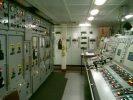  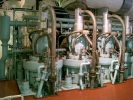
Starting again at the main deck, there were two ladders (stories of stairs) down to the Engine Flat and Engine Control Room. Most of the electrical switching gear for the ship was either in the Control Room or elsewhere on this deck, although each pump or motor had at least a fused disconnect that occasionally needed work. Another ladder down was the Generator Flat with the three Cat diesel-driven alternators that supplied power when in port, and access to the Power-Take-Off Generator that powered us underway off the Main Engine. Another ladder down was the bottom of the Main Engine, with the bilge below it. On all these various levels were electrical installations and electronic sensors that occasionally needed work. I had a standing invitation to work on the switch gear, keeping the starter contacts clean and bright (and low-resistance). There were five huge electric-motor-driven hydraulic pumps in a room below the Control Room. Almost everything on deck, including the cargo pumps, was hydraulically-driven, safer than electric power. Each of these motors had a large elaborate electronic motor-starter system that filled a six-foot cabinet, to limit the current during start-up. The generators could momentarily over-load and trip out, blacking the ship out, otherwise. These required maintenance and adjustment from time to time to keep everything working smoothly.
The ship's house had no elevator. The climb from the bottom of the Engine Room to my workshop in the Radio Room was six to eight stories, depending on where I was working. That can be a long way to fetch a forgotten tool, even though I carried a bag with the most-used items. I spent my college years in a room on the 7th floor of a seven-story dormitory, where the elevator was frequently out-of-service on weekends. Now I know what that experience was getting me ready for. Even the trip from the Main Deck was a four-story climb, and working on deck could entail a walk longer than a football field going and coming. Working on the radar scanners meant climbing 40-feet up the mast above the flying bridge, and then working on a narrow catwalk. Underway, there was always a wind on deck, usually in the realm of 20 MPH. Greasing the bearings on the scanners required standing on the catwalk handrails to reach the one, and sliding out five feet on the mounting bracket for the other. The bottom line is the job was not entirely sedentary.
When new, (1986) the ship had one computer onboard, an original IBM-brand PC with two 5-1/4-inch floppy discs and no hard drive, used for cargo handling calculations. The skin of a ship is proportionally thinner than an eggshell. The Matthiesen's outer and inner hulls were made of 5/8-inch thick high-strength steel. Loading or unloading 10-million gallons of cargo, at 6-pounds or more per gallon, takes both art and science to avoid damaging the hull. Soundings of the cargo depth in each of the 14 cargo tanks were taken continuously during cargo operations, using an in-tank radar sounding system. The figures were fed into the computer at least every 30-minutes. Out would come a table of the stresses on each part of the hull. The mate on cargo watch would carefully look these over to ensure the hull stresses were always well within allowable limits. The stability of the ship was also closely monitored. If the center of gravity gets out of limits, the ship can be in danger of capsizing.
Within a few years every officer had a computer to help with their work. One of our Chief Mates loved to play Flight Simulator, and brought a version along one tour that allowed flying against another opponent, over a network connection, for dog fights. At the Master's request, I hooked their two computers together with a length of CAT5 cable and a small 4-port router I used from time to time in the Radio Room. They would string the coil of cable down the companionway to play a session, and roll it up when done. Our Captain was very computer-savvy, and did some file-sharing with the Mate, which turned out to be much more convenient than what had been our normal procedure. It became apparent that a permanent Local Area Network (LAN) would be a welcome addition.
The Captain and I went ashore in Singapore one fine day and purchased all the needed tools, parts and supplies, using $150 out of his petty cash fund (for "office supplies"), and over the next two weeks I crawled through passageways and raceways all over the ship, installing a permanent wired LAN, spanning four decks and 14 terminals, with additional runs to the Engine Control Room and Cargo Office. There was occasional help from a couple of the officers. I installed a stripped-down email server program on one of the computers in my office, and we had ship-wide email service. Much of the routine paperwork that kept the ship running became a point-and-click operation. Our productivity increased and our paper use dropped as a consequence. This was all volunteer labor, since we wanted our project to be "invisible".
We had periodic inspections by a representative of our operating company home office staff to ensure that all their (five) ships were being maintained with identical systems, equipment and procedures. During our next inspection our "illegal" network, for which we had not asked permission, was discovered, and we feared disciplinary action. The representative was a fellow who had been to sea during his career, so had some idea of what life (and work) aboard was like. He asked questions about, and requested a demonstration of, our LAN, and the way we were using it to streamline our work. He mentioned nothing about our LAN in his report, and we waited for the other shoe to drop - until the company sent out a message a month later to all five sister ships mandating they all install a similar LAN. I spent some time answering inquiries from the sister ships, and developed a "how-to" manual to assist them in their installations. The ships were almost identical in construction, so I had already seen (and solved) all the problems they would encounter. Never a "thank you" or an "atta-boy", but at least we kept our jobs.
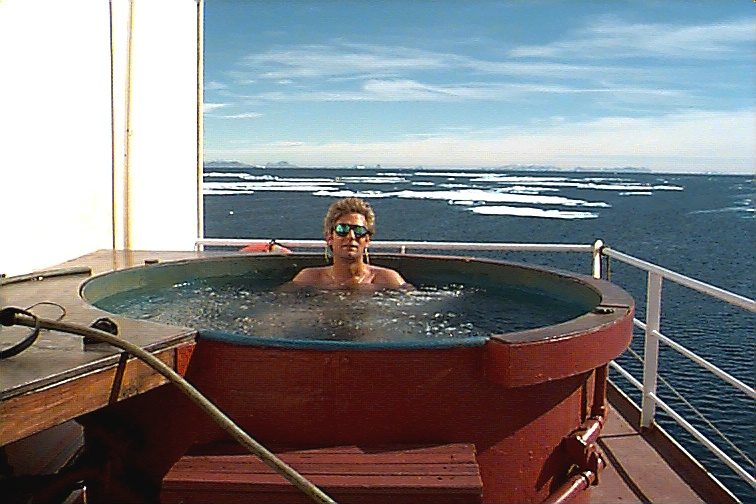
There were a number of these "invisible" projects that "just happened". They made our lives aboard ship more comfortable. When asked, we would all say, "it happened before I came aboard", "that's always been there", or something to that effect. The operating company never understood that, for 4-months at a time, this was our home, and most of the officers were "permanent", returning tour after tour. When professional engineers and technicians have 24/7 access to a fully-stocked machine shop, electronics workshop, and plenty of time on their hands, pet projects have a habit of materializing. One example was the hot tub that "had always been" on the deck just aft, outside the officer's lounge, constructed of a 4-foot high scrap section of 2-meter diameter Saudi oil pipeline, with wooden benches, distilled water (heated by steam and/ or electricity to 99-degrees and changed every three days), a circulating pump (that was a spare for the sewage treatment plant), and a "bubbler" fabricated from a salvaged vacuum cleaner.
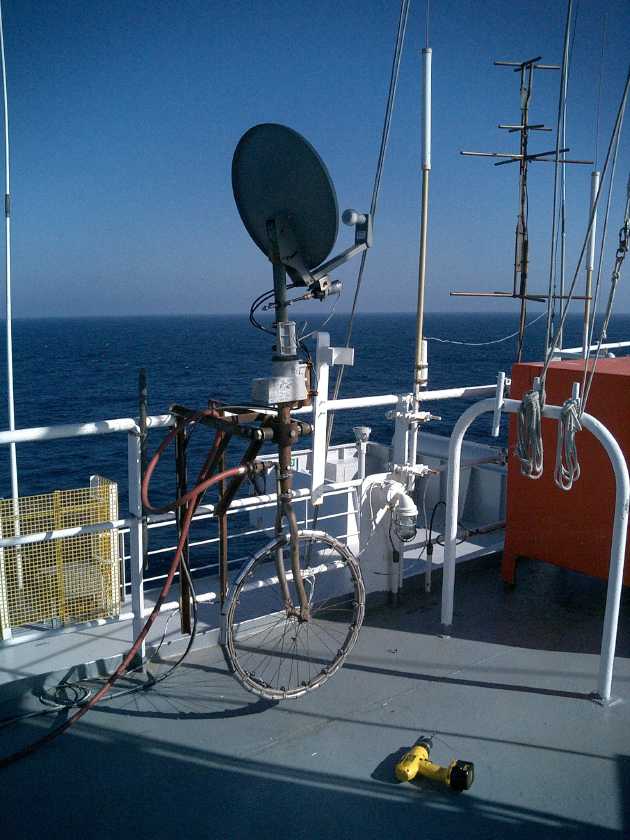 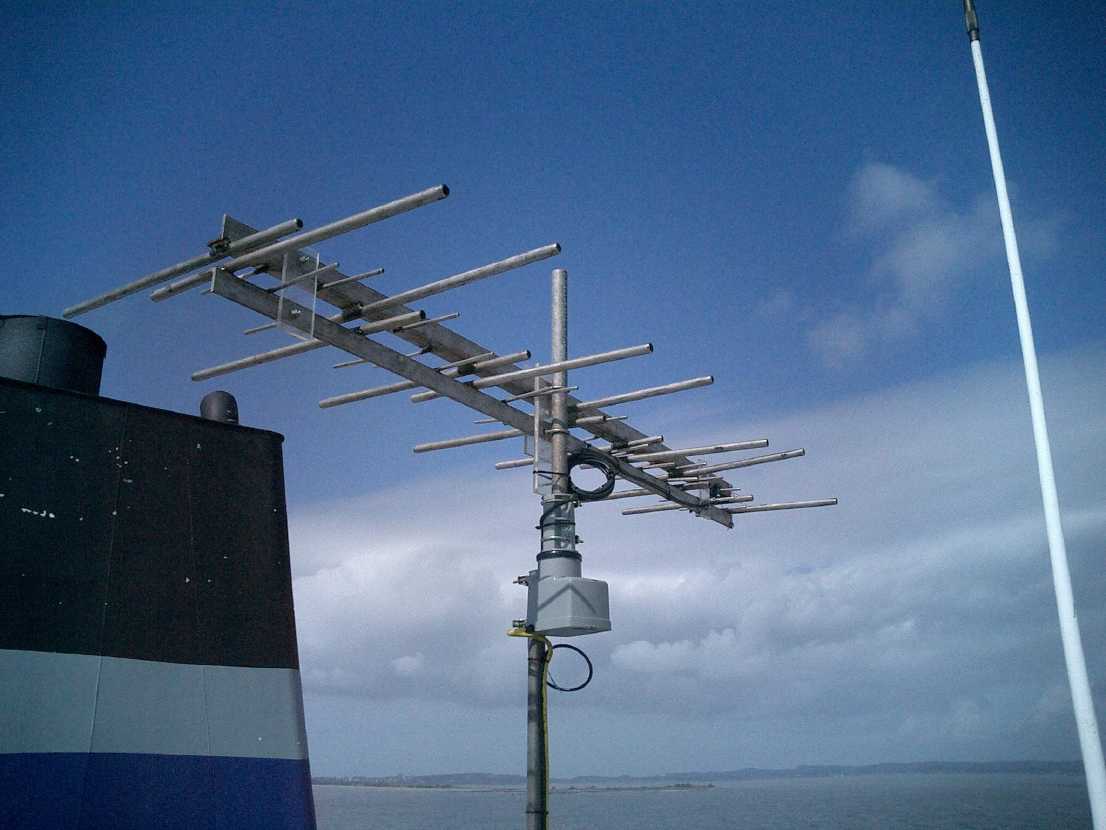
Another would be the two scratch-built low power FM music station transmitters. In the early days, when we had an analog "Sat-A" satellite station, Armed Forces Radio leased one of the Inmarsat channels for a private world-wide news/music feed. An added tap off the Earth Station IF section (75-ish-MHz) fed to an all-frequency (DC to light) scanner, allowed tuning in a high quality signal that was repeated all over the ship on FM 108. Later, FM 88 showed up fed from one of the three MF/HF receivers with BBC World Service, or other shortwave programing. When the satellite station was changed out for the new digital "Sat-B" version, AFR went away to be replaced by XM, Sirius, or WorldRadio (owned by the same company but the satellites were aimed at Africa, and Asia). I picked up the appropriate receiver as each became available, and installed it in the TV-Cable distribution cabinet. The mate on watch was in charge of program selection. These, along with the feeds from a satellite TV dish (gyro-stabilized with a weighted bicycle wheel spun by compressed air), and home-brew, stainless steel turnstyle omni-directional TV antenna (also visible to the right of the satellite dish) were routed through a cable distribution system throughout the ship, so we had something to watch and listen to, besides the extensive video tape (later DVD) collection. There was also a custom designed (me) and TIG-welded (Chief Engineer) all-stainless steel log-periodic off-the-air TV antenna, which allowed us to pick up programs from 60-miles or more offshore, which appeared during the World Series one year when the Master's favorite team was playing. ---but I digress.
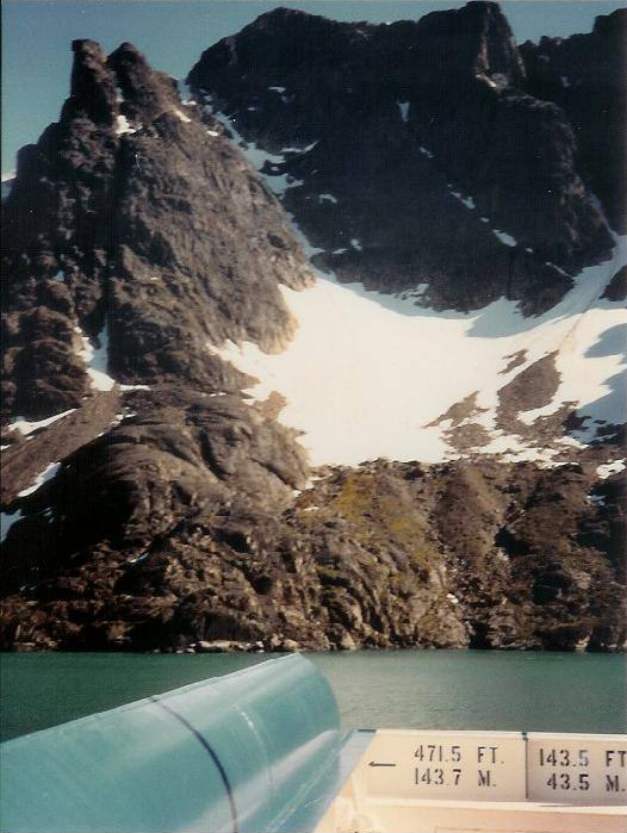 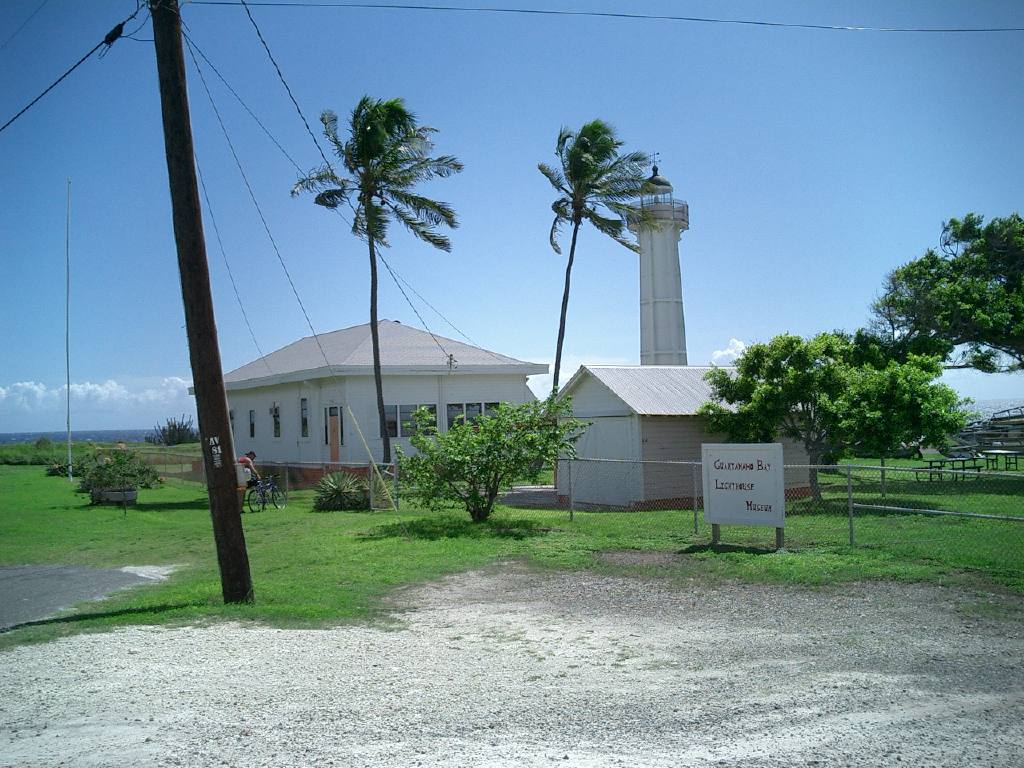 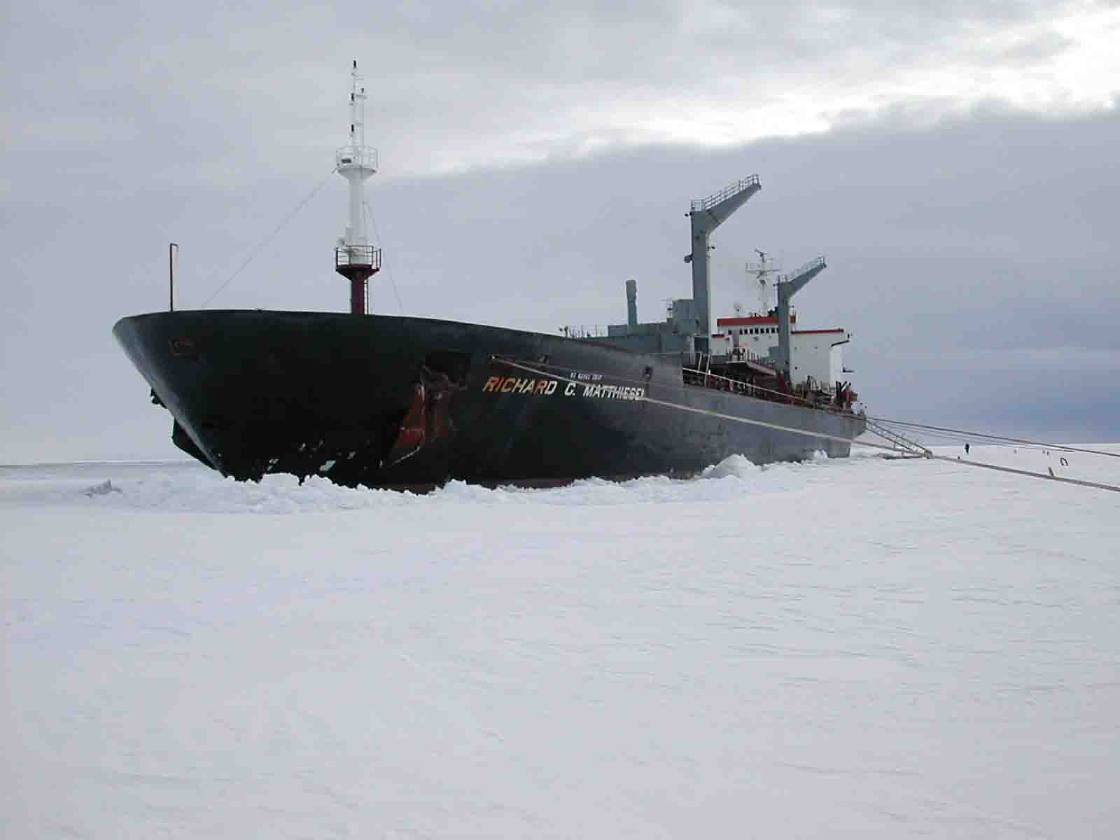
We had neither a "home port" nor a "regular route". We "tramped" all over the world, generally well clear of the regular shipping lanes. The crew would travel by "planes, trains and automobiles" to and from whatever port the ship was in when it was time for relief. Wherever the US Military had an interest, we went to keep the fuel tanks full. An army may travel on its stomach, but the Navy doesn't move without a fuel supply. I have stood on every continent, including Antarctica, twice; many islands, including Greenland, six times; sailed every ocean, and nearly every sea (except the Black Sea). I've spent summers in the dusty desert heat of the Persian Gulf, and storm-tossed, ice-sheathed winters in the North Atlantic. For those who hanker to buy a boat and sail off around the world, all I have to say is, "sometimes, 600-feet is too small."
 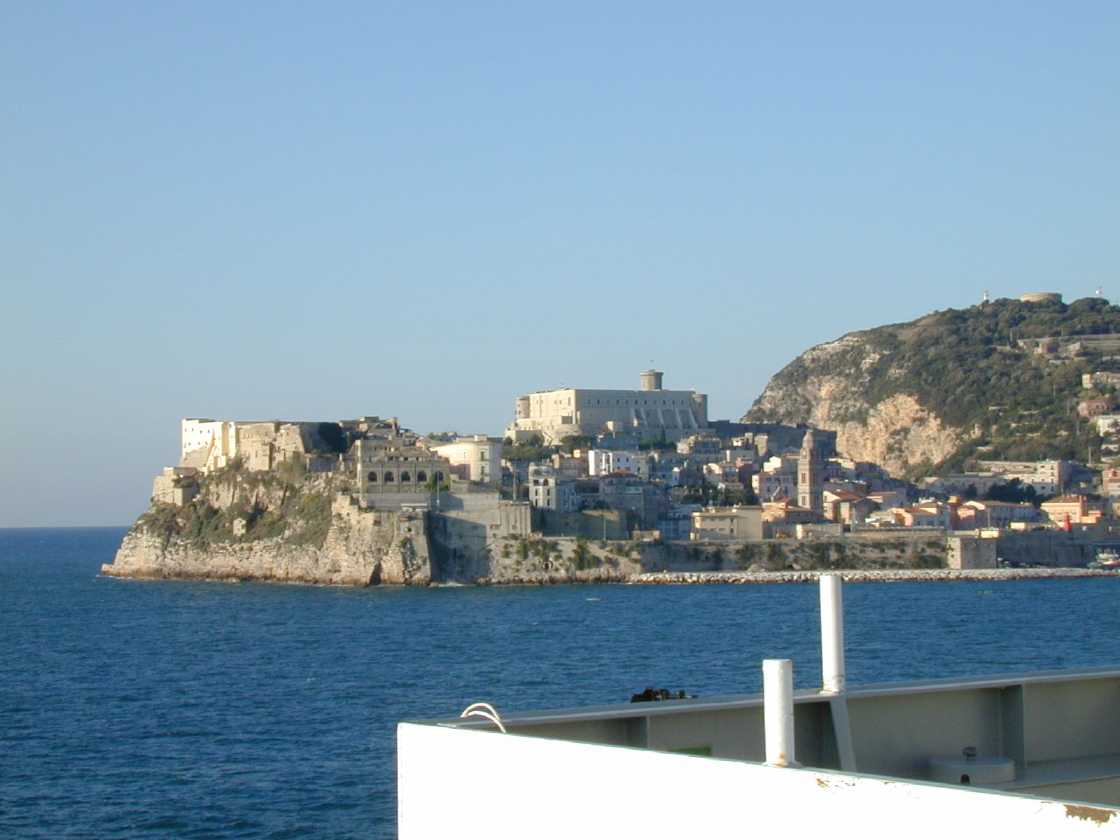
A typical port stay lasted 24-36 hours, although occasionally we stayed put for a week or more. I didn't have to stand a watch in port, although I did have an hour or two of routine work to do. I could usually take most of the day (or two) ashore, to walk or bike around, catch a meal or two and snap a few photos. One got to know ports one-day-at-a-time, as we would return to some more frequently than others. The first time ashore in a new port was usually spent getting the lay of the land, figuring out if foot, bicycle or cab was the best way to get to town, finding the railway station and obtaining a schedule, or checking out whatever other public transport was available. Some places had no town and only limited facilities. Some were military bases where we might (or might not) have privileges in the Exchange or Clubs. Although fuel is arguably as important as food or ammunition to a military base, we were always the civilians under foot and out of place. Our officers all had equivalent rank, but since we didn't wear uniforms, that didn't count for anything. But, we seemed to always be welcome at the Chief's Club. A few ports we only visited once, truly out of the way spots. Most ports got return business, some fairly frequently. After a while, one knew how to get the most out of a day, see old sights worth revisiting, scout out new ones, and return to a good restaurant or two worth patronizing. One warm moment was returning to a favorite dive, the "Crazy Elephant", a bar on the Quay along the Singapore River, run by three Malaysian women. Say what you will, but for my money, they had the best home-made American-style hamburger and coldest Tiger beer on the island. After being away for months, I walked in and was greeted like a long lost friend.
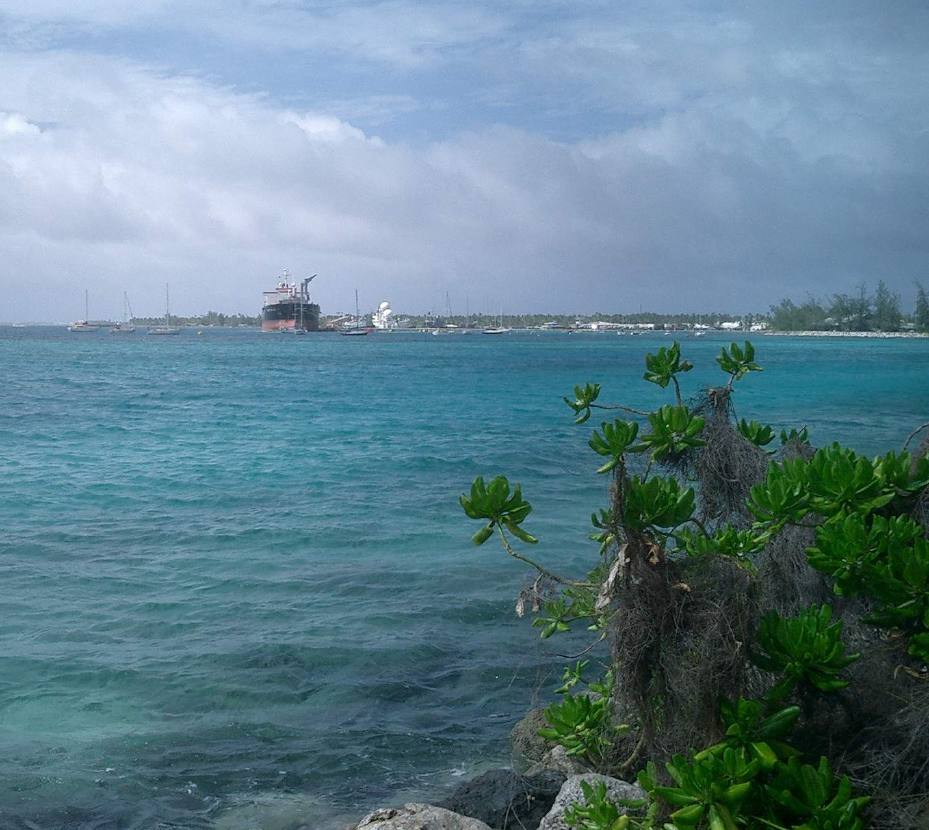 
Voyages lasted from a few hours between say, Long Beach and San Diego, to six solid weeks spent drifting 60-miles northeast of Maui (when the turnstile TV antenna appeared), standing by for a US Navy RIM-PAC exercise, followed by another two weeks to get to Guam. There were certainly the long trips when we were ordered to sail halfway around the world, like leave Djibuti for Kwajalein, and then San Francisco... We would normally be assigned to a particular Navy Command for a period of months. So we might be working between ports in say, the Far East, (FE), Western Pacific and Indian Oceans, Korea, Japan, Philippines, Singapore, Australia and the islands west of Wake, for a year. Then we would shift to another Area of Responsibility (AOR), and perhaps be working the ports in the Mediterranean (MED) and Northern Europe (EUR) for a while. Other AORs were (PAC), Eastern Pacific including the west coasts of North and South America, and the islands east of Wake; (LANT), Western Atlantic, Caribbean, Gulf of Mexico, east coasts of North and South America, including Guantanamo; or (CENT), Persian Gulf, Red Sea, east coast of Africa, India, Sri Lanka and Diego Garcia.
    
One had a chance to get to know the ports in an area, and then move on before the "newness" wore off. There were a total of five sister ships in the class, of which I sailed on three. We rotated between the AORs, kind of like "musical chairs", and after being away for a few years, would return to each AOR for a while. The only logic to this involved periodic shipyards, The ships were required to be drydocked to catch up on maintenance that couldn't be performed underway, at least twice in every five year period. If a ship was nearly due for a yard, it would (probably) be designated for one of the arctic/antarctic runs. The paint took a beating, and sometimes the hull, with the ice passage, and afterward the ship would head for a yard period, within a few weeks of returning.
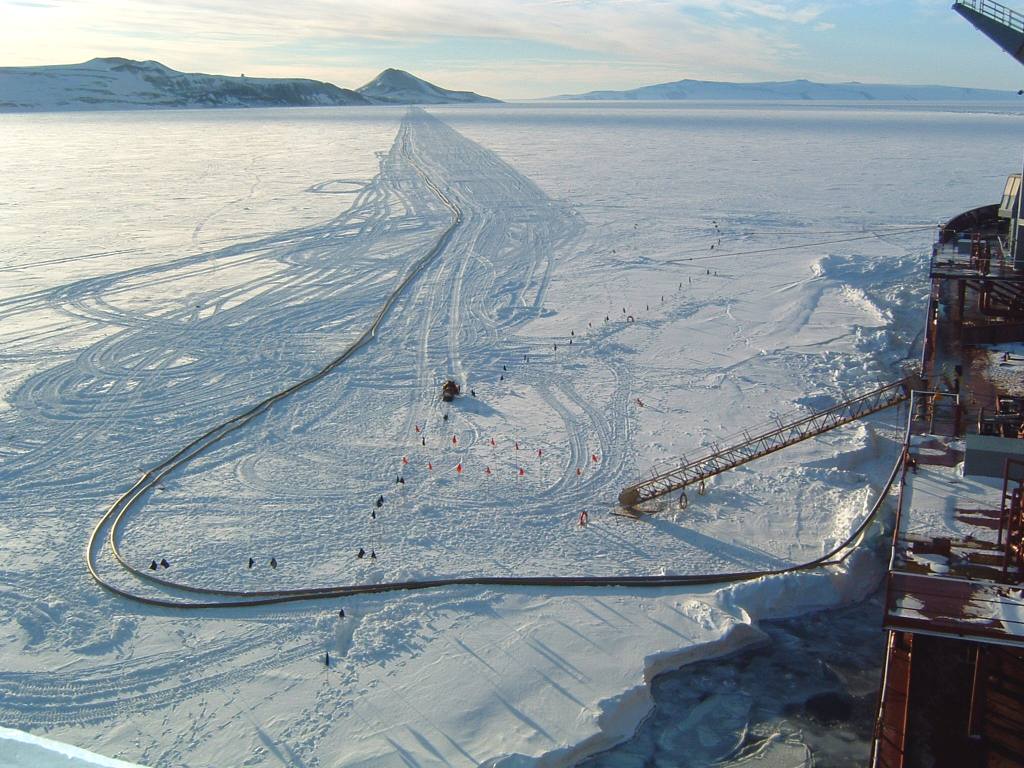 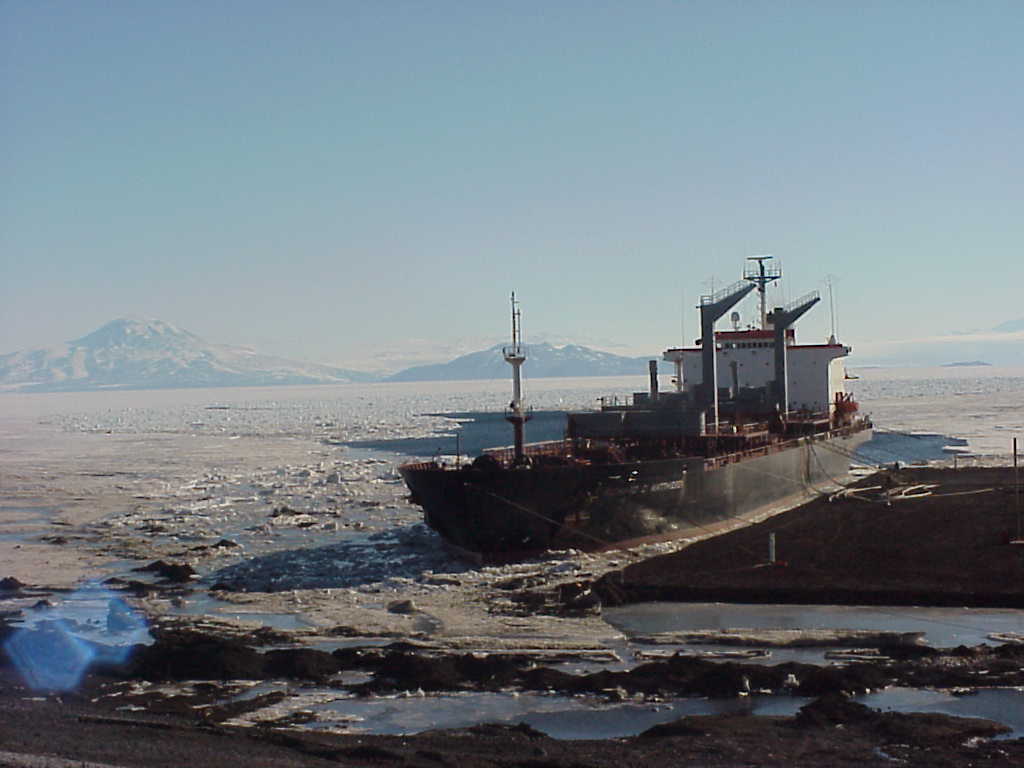 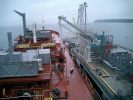
We typically picked up our cargo at a refinery or commercial terminal, but sometimes it came from a military base or contract fuel storage facility. With the right infrastructure we could load the entire cargo in a shade over 16 hours, but 24 to 30 hours was more normal. It took a similar amount of time to unload a cargo, limited mostly by the capacity of the ship's cargo piping. The normal destination port was a military base, either US, NATO or other ally nation, but we also discharged at terminals, storage facilities and military fuel depots in garden spots like Yemen or Djibouti. Once in a while, we were tasked with an unusual mission, like using a pair of 6-mile long hoses when the icebreaker couldn't get us to the ice-dock at McMurdo. Click here for a story from McMurdo in .pdf format.
 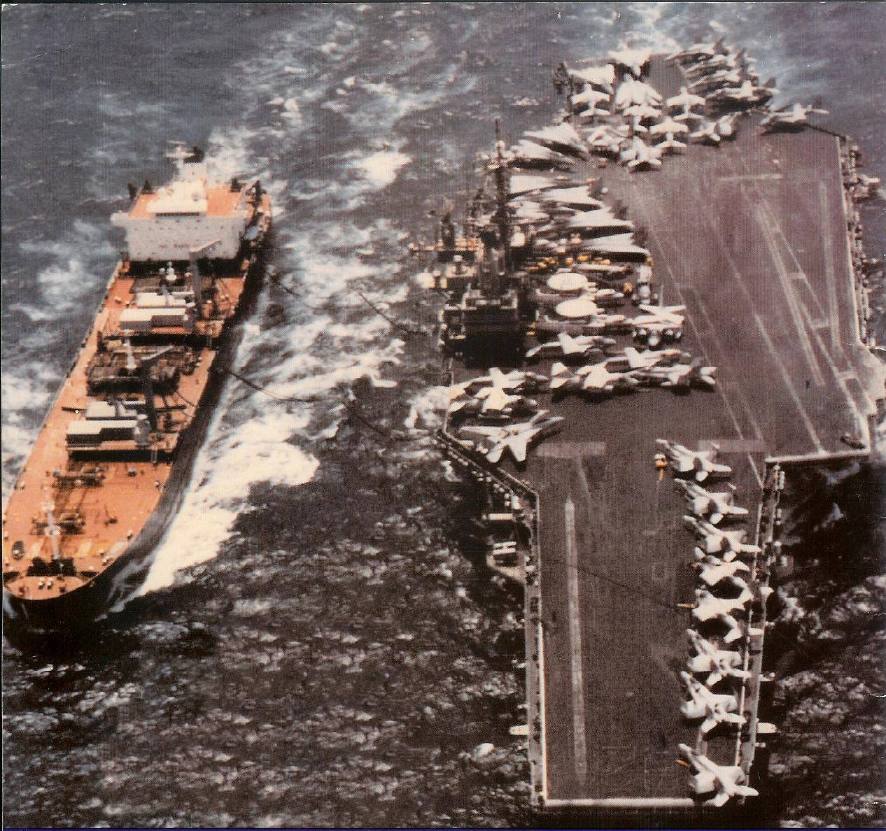  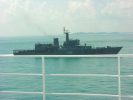
We were capable of doing ship-to-ship (alongside or astern) underway replenishment, and did so on a number of occasions, including the three-abreast operation, shown in the picture (on the right), with a cruiser on the far side of an oiler. The most common oiler is the Kaiser Class, carrying a crew of about 129, and a radio room compliment of 18. With two replenishment rigs (the gray towers on our port side) to their six, we could operate as a "third of an oiler". We also engaged in more "informal" replenishment operations, even occasionally meeting a lone ship in the middle of nowhere. That would begin with a classified message giving a place, a time, a fuel type and quantity. We would arrive at the appointed place and time and after a few hours we'd go one way and they'd go another. All communication was by flashing light or sound-powered phone over a line strung across. A few times we played oiler, keeping an entire task group topped up all by ourselves. On several occasions, we refueled aircraft carriers, while they were conducting flight ops, with our bridge wing 50- to 100-feet from, and at the same elevation as, the flight deck where the arresting cables were, as they launched and recovered aircraft. The noise was indescribable. This would typically last 5 to 15 hours, with four 8-inch hoses flowing jet-fuel at 150-psi. Anything, anywhere, anytime was the name of the game.
Regulations can bear odd children sometimes. While at the ice pier in McMurdo, the USCG ice breaker would come alongside and tie up to us. With only one dock, this got their folks ashore for liberty. Since they were along side a vessel handling dangerous cargo, there was no smoking on the cutter. Our seaman's union required a place be provided when smoking was otherwise not allowed on our ship. We had 3 tiny rooms, maybe 10-by-12 with two double bunks each on the Mess Deck, for extra riding crew. One of them was designated the smoking room. While adequate for our needs, with the cutter alongside (crew of 250), we had a steady line of folks coming over to smoke, standing-room-only in our room. You could not have paid me enough to enter that room.
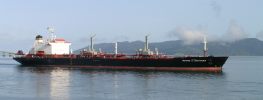
Here's a picture of the Matthiesen sailing by Astoria, Oregon on the way to Vancouver, WA to discharge, taken by my wife. If you look very carefully, I am wearing a red jacket on the bridge wing. One mission for which these "Champion Class" tankers were built was a little more subtle. The Navy owned the ship, but it was painted as a commercial vessel, and the crew were all civilian contractors. Let's say the Navy has a carrier group in, say, the Persian Gulf, fighting a war in, say, Kuwait, or Iraq, or Afghanistan, at the west end of the Persian Gulf. The oiler keeping all those hungry ships and planes running eventually gets a little low on spare fuel. They really don't want it to go into, say, Jebel Ali or Dammam or Fujairah, at the east end of the Gulf to tank up, because that big gray warship is a juicy target. Instead, they'd like a ship, in civilian livery, with the same capacity to go in, pick up the load of fuel, go find the oiler, and trans-ship the cargo. A civilian ship isn't a 'legitimate' target. You can imagine just how warm and fuzzy that made us all feel, while sitting in port on top of 10-million gallons of jet fuel...
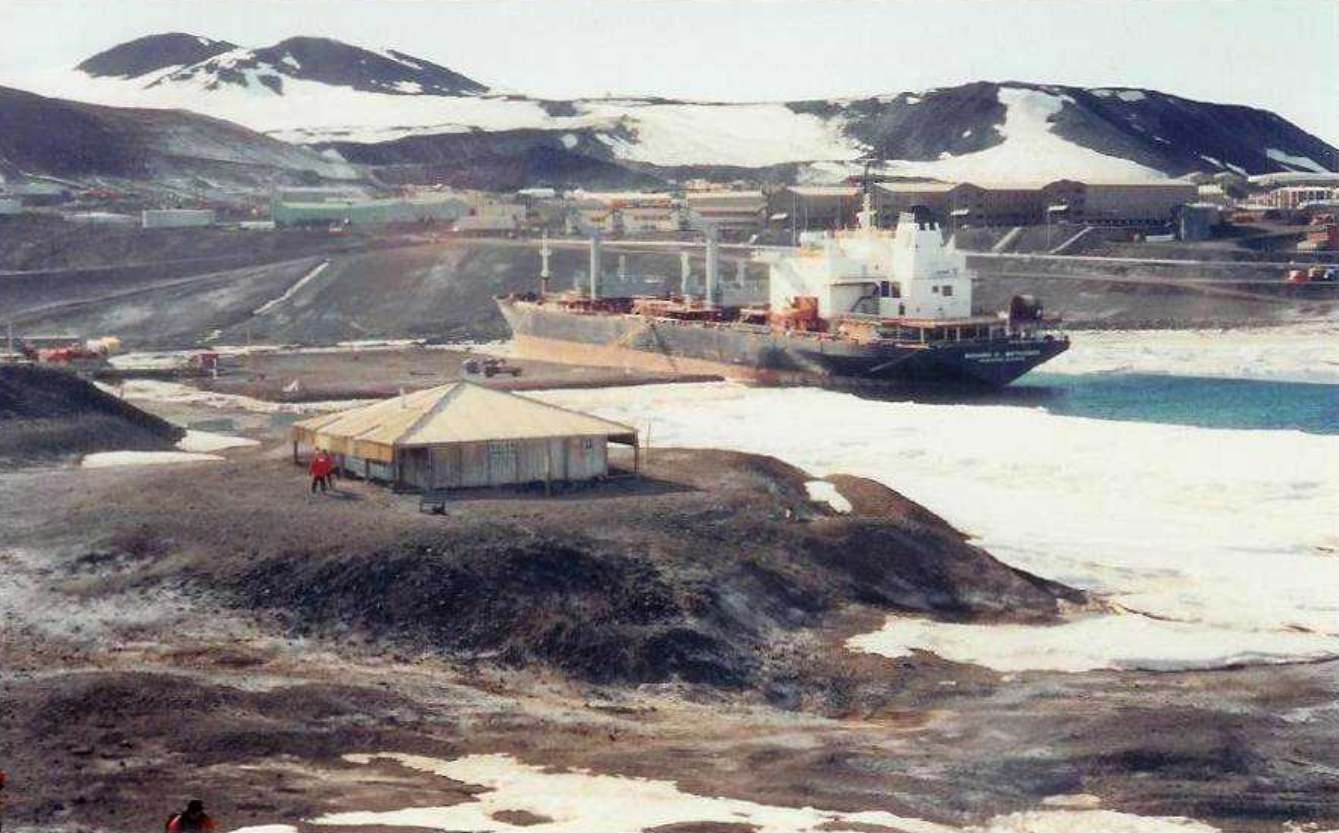 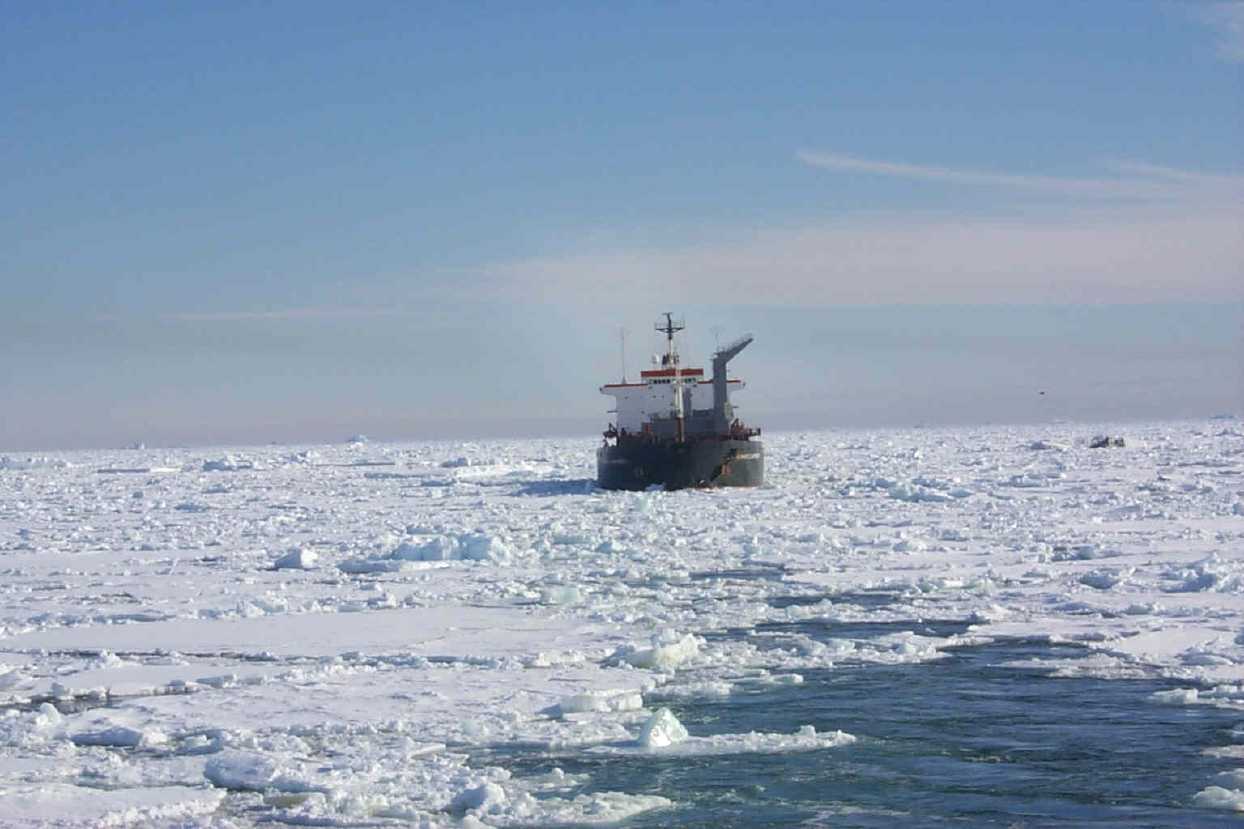 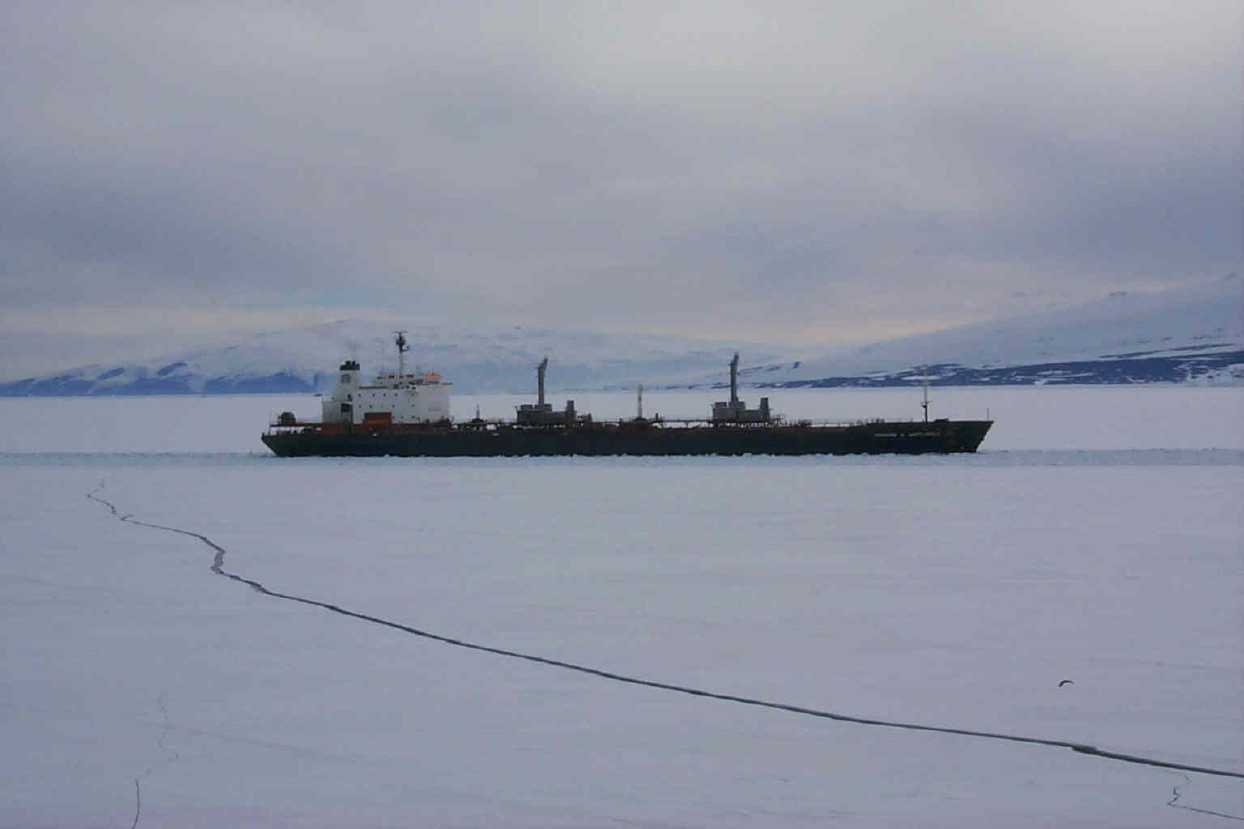
I got to operate LF, MF, HF, VHF, UHF and microwave satellite & radar (and occasionally flashing light) communications from everywhere you can imagine. Professionally, I used HF SSB once in a while, mostly for contact with some of the more remote places to which we sailed. On the voyages to Antarctica, SSB on 11 and 8 MHz was our only contact beyond VHF range, with the escort icebreakers or McMurdo Base. Starting the day we left Australia (we topped our bunker tanks in Fremantle for the journey) I would contact "Mac-Ops" twice a day with weather, position and ETA updates. They really appreciated the weather reports because that part of the Southern Ocean is pretty empty of reporting stations. Keeping track of our estimated arrival was important, not only for our fuel delivery, but because the dry cargo ship follows us down. Unloading her requires a lot more people, time and work than the week our discharge takes. There is only the one dock, and both ships have to be handled within a very narrow weather window. Satellite communications are problematic in the polar regions. Viewed from the ship, the geostationary satellites, 22,800 miles above the equator, are low on the horizon, and the microwave beam can be blocked by almost anything, including icebergs, or the ship's own masts and stack. I also used SSB almost exclusively on the northern arctic runs to Thule Air Base, in northern Greenland, on 13 and 5 MHz military frequencies.
Much of our commercial and military traffic was handled by HF SITOR, the commercial cousin of AMTOR. On occasion I used RTTY to exchange traffic directly with US Coast Guard and Navy ships. We had Inmarsat satellite voice, data and telex communications available, but initially they were expensive, and we tried not to use them, to keep the budget within bounds. Even later on, when rates had dropped, HF was still more fun. It was interesting to watch the remarkable changes in communications over my career. When I began, Morse and HF teletype were the mainstay. A Morse telegram went for $1 per word, but was no longer available by 2002.
In 1990, a satellite phone call was $10 per minute with a 4-minute minimum, charged in whole minutes. By 2004 that was down to $1.30 a minute, charged in 6-second blocks. When fax machines became reasonable, my wife and I used that mode to correspond. A one-page fax went in under a minute, and you can put a lot down on a page, once or twice a week. High speed data became available and all but replaced the previous forms of text. The Inmarsat station used a 1-meter motorized tracking dish antenna in a fiberglass radome on the flying bridge, and about 25-watts at 1.6 GHz, through one of four geostationary satellites orbiting 22,800 miles above the equator. When switching from one bird to the next as we moved around the world, the dish needed to be manually re-aimed. In the far north and south, the satellites appear so close to the horizon as to become unreliable. As the ship turned back and forth, the stack or other structures would interrupt the beam.
Mail was a bit of a sore point with us. Mail from the ship to home wasn't such a problem. Every time we visited a port, we would drop off outgoing mail. With a constantly changing schedule, dictated by the frequently changing priorities of Navy operations, getting mail to us was more problematic. Family would send mail to the office in Houston, to be deposited in a DHL International Overnight box. About every two weeks, that would be sent to meet us at our next port of call. That often changed at the last minute, leaving our mail in a port we might not visit for some time. Of course, sometimes we wouldn't have a next port of call for as much as a month or more. While this was inconvenient for the crew, it could be dangerous as well. Every week a booklet of chart corrections is issued for our chart collection. If the Second Mate cannot get these, then our charts quickly become out of date. After a month or so, he is so far behind as to make it difficult to catch up. We were not the only ship with this problem. But, never fear, technology to the rescue! An English navigation supply company, Kelvin Hughes, came up with a very slick fix for this problem. In addition to phone service, the Inmarsat communications satellites also provide data services. Kelvin Hughes leased a low-Baud-rate one-way data channel, the same channel on all four of the satellites. This provided a broadcast circuit available nearly everywhere on Earth, through a standard Inmarsat type-B (digital) station. Setting up a dedicated computer in the chartroom, and hooking it to a (leased) decoder box connected to our Sat-B station allowed us to continuously download chart corrections to files on the computer. The software included tools to help the Navigator manage his corrections. Of course, this did not help our mail delivery.
 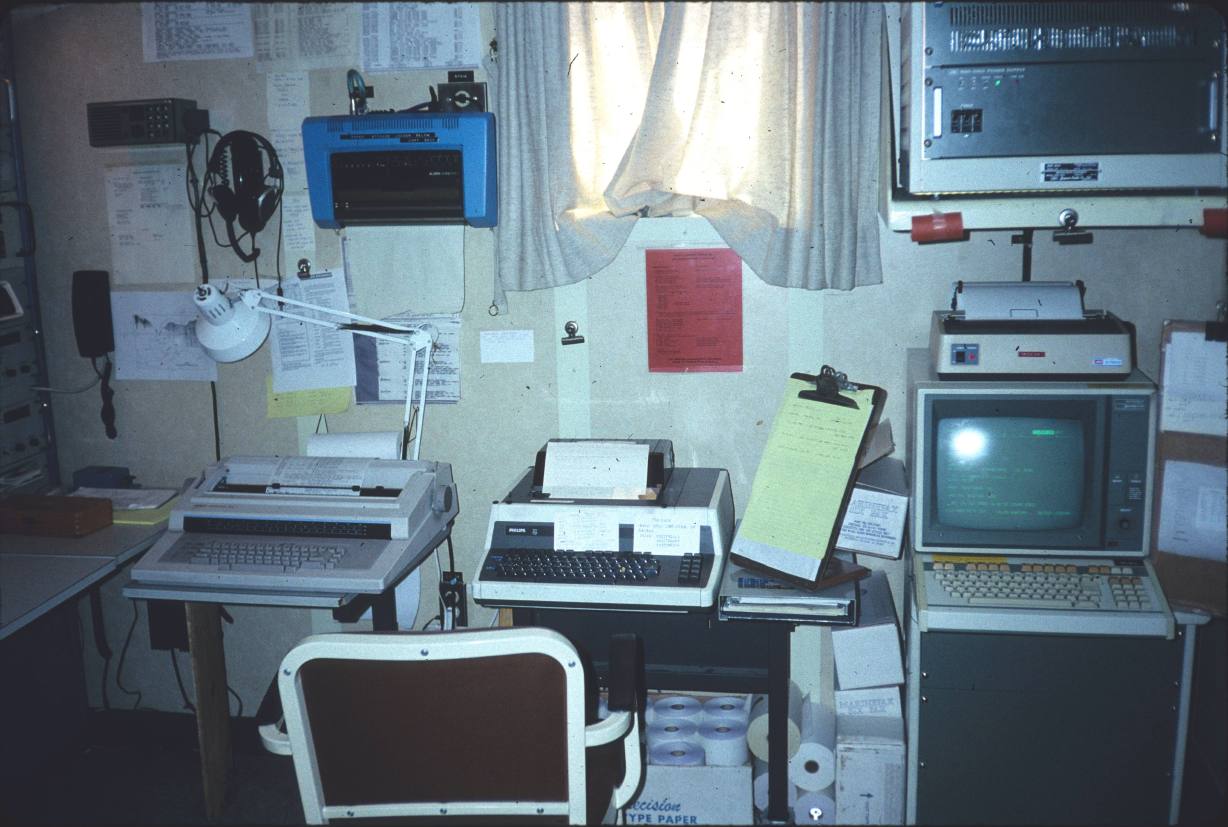 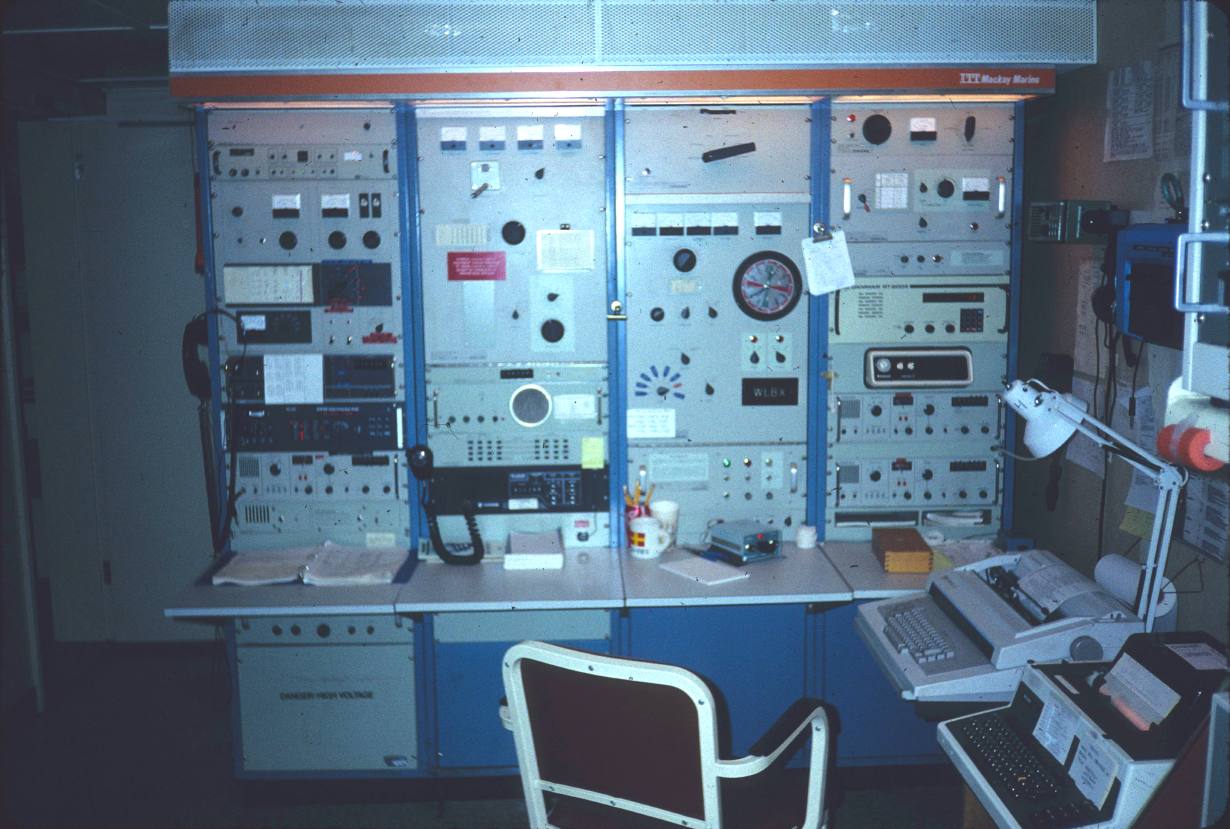 
Yes, I used Morse code professionally on MF & HF for commercial traffic, at least up until 2000. Note my venerable Heathkit Keyer, modified with a keying relay inside, on the desk/shelf in front of the Medium Frequency station (second picture from the left). The Mackay MRU-35 would operate at just shy of 2-kilowatts, full break-in (QSK) on any frequency from 1.5-30 MHz into a 40-foot vertical on the bridge wing, 60-feet above the water. The ship's Medium Frequency station included a Mackay crystal controlled CW transmitter running 500-watts, (QSK) and a battery powered solid state 200-watt Emergency transmitter. There were a pair of 60-foot verticals and a 250-foot horizontal wire from the radar mast forward to the midships mast. Range was always better than 200-miles, with several contacts out to 2000-miles or better. QSK is a valuable feature, particularly with a commercial CW station, as it allows the operator to listen between the dits and dahs. If the other operator misses something, he sends a couple of dits and the sending operator just sends two pairs of dits, backs up, and starts the word over. There were three receivers on separate antennas, that could be used for diversity reception.
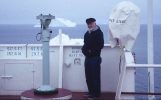
When I started the job, I had to put in 6-months (of actual sea time) under another REO before earning the Service Endorsement that allowed me to be a lone REO. During this cadet period, Mike, my Mentor, required I use CW to send in our weather observation reports (WX OBS) every 6 hours while on watch, that's 2 or 3 times a day, using a different shore station every time. That meant using MF when there were stations within 500 miles or so, and HF when that was all that would work. I had to send "pratique" requests (clearance to enter a port) and receive the answers by CW occasionally. Copying one of these at 30+ WPM, in Italian is "interesting". When transiting the Suez Canal, a list of ship call signs is sent while the ship is anchored in the Great Bitter Lake, about halfway thought the passage. The list is the order in which the ships were to leave for the balance of the journey. The operator had a terrible fist, but the list was sent twice. I typed up the list and passed it to the Master to pass to the Pilot. It was a lot of work, but it gave me an appreciation of the kind of job the old Sparkies must have done every day.
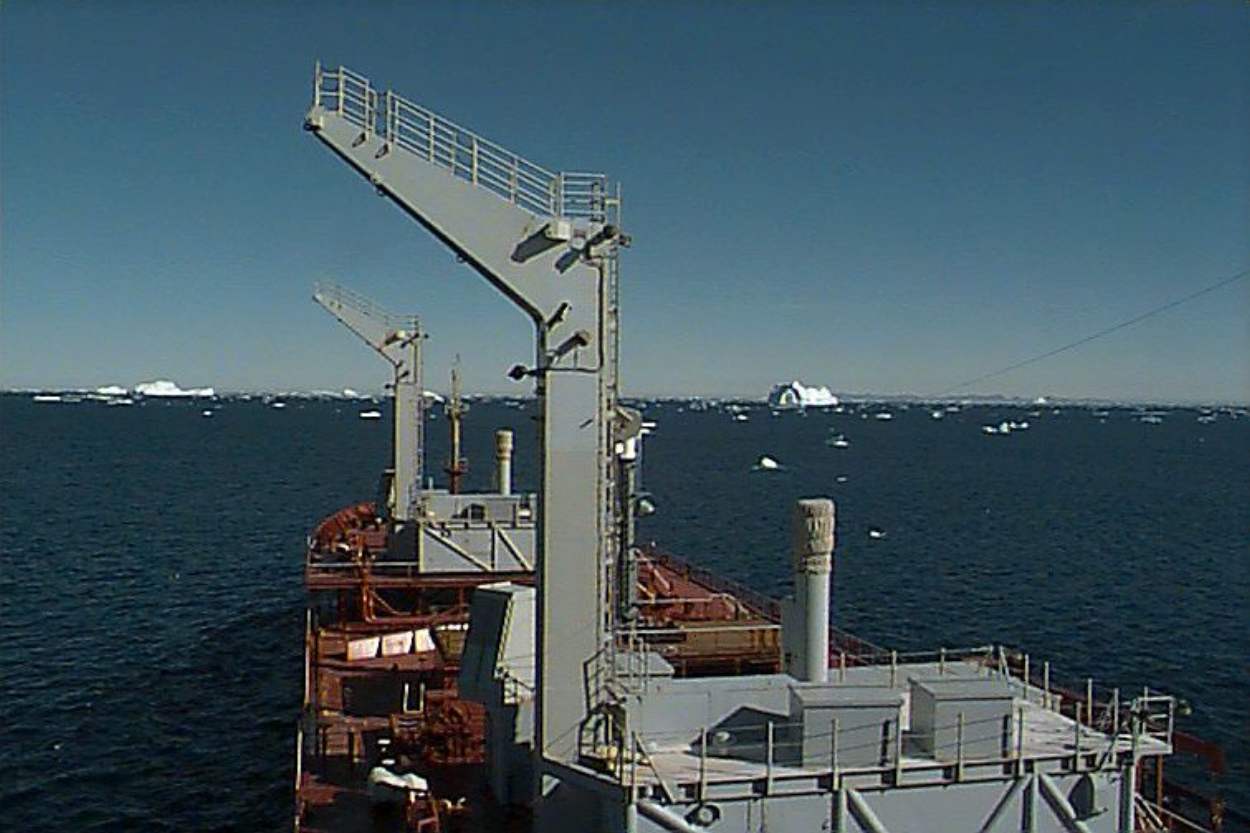 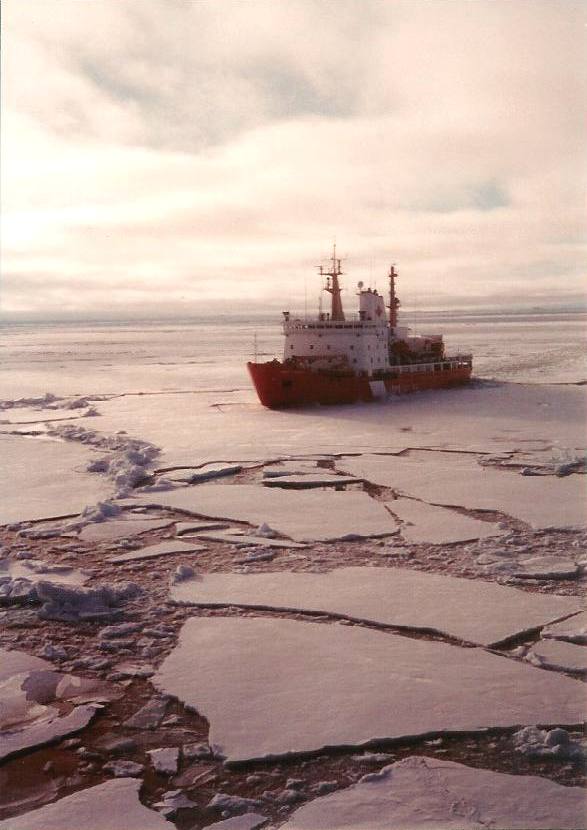
My most memorable CW experience was on a voyage to the arctic to resupply the US Air Force base at Thule, Greenland. On this occasion, we used the services of a Canadian ice breaker. They had commandeered a radio operator from Radio Halifax for the trip. We both had many demands on our equipment, and finally settled on MF CW as the one circuit we had in common that was not already spoken for or in use. So for a couple of weeks, we kept in constant touch and ran traffic between us using that mode almost exclusively.
Before leaving the subject of Greenland, I feel a need to mention one thing further. Having, over the span of 15-years, made 6 trips to Thule, which is at the northern end of Greenland, less than 900-miles from the North Pole, I can personally attest that Climate Change is real. The first couple of trips to the Top of the World took several weeks, following an ice-breaker that worked hard bashing and busting a path through the yards-thick sea ice. Each trip became progressively easier. The last trip, was mostly open water, with us almost able to sail right on up and into Thule harbor on our own. The icebreaker was more of a tender, nudging icebergs out of our way. The difference from trip to trip was stunning, and very real. This should not be looked on as either a trivial or a good thing. The amount of heat energy being added to our atmosphere to make this happen is frightening.
A Medium Frequency Ham band near 410-510 kHz, even on a secondary basis, even at 200-watts, would be fantastic...
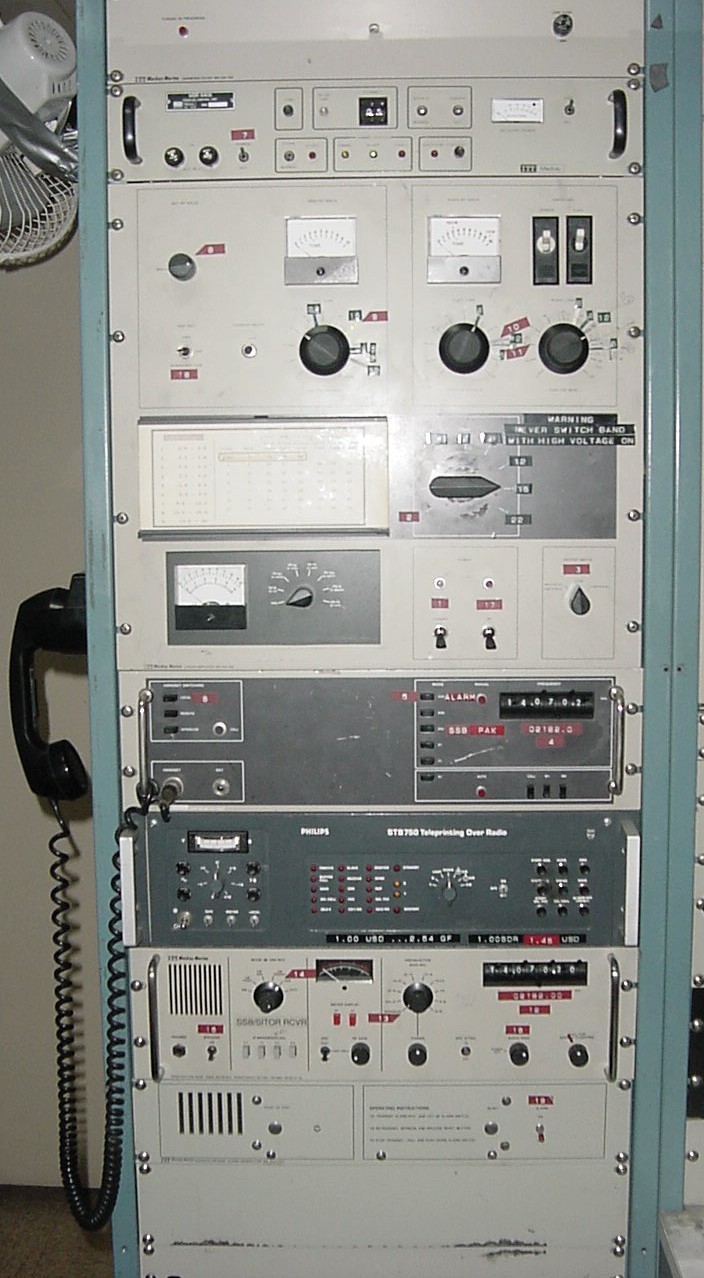
On my own time, I kept in touch with home using Amateur radio. I would fire up the Mackay MRU-35 HF station (throttled back to 1200 watts) for SSB contacts between the ship and home station while in the Pacific, Atlantic or Gulf of Mexico (both my wife and father were Hams). How many Hams get to hear the "other end" of their own home HF radio station? While I appreciate compliments from others about how nice my signal is, it can't hold a candle to how nice it sounds when it's my wife's voice filling the Matthiesen's radio room while being tossed around in the Aleutians. Beyond a few time zones away, I'd use phone patches and Winlink HF Pactor email from all over the world. Winlink generally worked better than the commercial HF world-wide email service we used, and revolutionized home communications for guys like me. I brought an AEA PK-232 TNC onboard, and wired it into the Mackay in the mid-1990's, when my relief and I wore out the original-equipment mechanical TTY terminal. The AEA worked fine on SITOR, HF packet and Pactor. For pactor, I ran the big transmitter in the 200-Watt "tune" position. Click here for a story from the "Top of the World", in .pdf format.
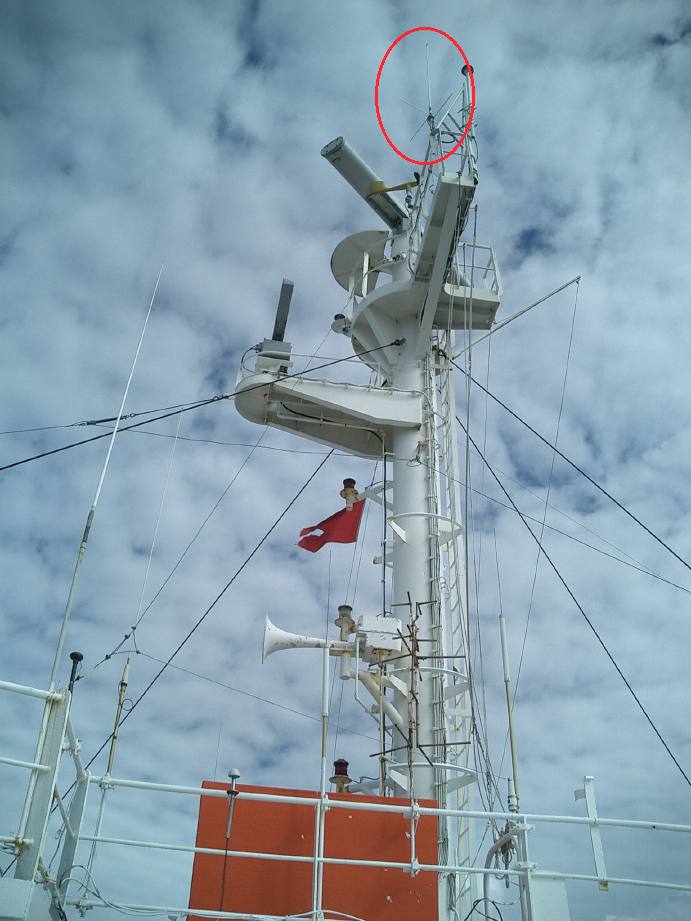
I carried an Icom IC-207 VHF/UHF dual band mobile radio, with a Hustler G6-270 antenna mounted on the radar mast cross arm, at 100-feet above the water. Along with lots of in-port and along shore contacts, I made several VHF and UHF FM voice contacts from over 1000 miles at sea when the tropospheric ducting was favorable. Coastwise, I would use repeaters. While sailing the West Coast, I was able to regularly work my Dad (in Stockton, central CA) from the ship 100-200 miles off the coast using the Mt. Diablo repeater. IRLP was a lot of fun, using stations along the coasts as well, to call back to my own node, back home.
Hurricane Katrina hit the Gulf Coast the day we left Hawaii for the Panama Canal, a 2-week trip. The crew was largely from the Southern States and wanted any information they could get on how things were at home. I had very little to offer. A few tried a satellite call home, but they weren't answered. About four days out, the V/UHF radio scanning under my bookshelf began to "hang up". As the morning progressed, I heard occasional familiar voices. This finally coalesced into a WIN System UHF repeater signal out of San Diego, 1200 miles away. I pulled a Sea Surface Temperature chart and sure enough, there was a tongue of cold water connecting us, creating a tropospheric duct. On a lark, I went to my stateroom and turned on the TV. There was nothing but static, except --- News Channel 8 from San Diego was perfect! It turns out 8's transmitter is on a building downtown, probably under the duct ceiling, while all the other stations are on the mountains, above the duct. On my way to lunch, I stepped into the crew's mess and switched on their TV. Jaws dropped and my reputation soared as the TV pumped out non-stop Katrina news for 3 days. Then, as quickly as it had come, it went away. "Hey, Wow! Sparks, --- did you pirate a TV satellite?" "---Tap into a military feed?" ... Sometimes magic just happens. The skill is in understanding what's going on and being able to use it to advantage.
As a retired professional electronics technician, I would say that I resent the fact that as my eyes got older, the parts got smaller, and electronic engineering challenges are a lot more fun when it's a hobby, parts suppliers are available on the phone or Internet, and no one is in a hurry.
...and so... we come to the end ... time for a little philosophical wrap-up... The following may be aimed at those a bit earlier along in their life than me, but whatever ...
I am no spring chicken, being closer to 75 than 65-years old, and having so far survived both cancer and a heart attack, I have no illusions concerning my own mortality. I grew up in the San Francisco Bay area, spending a good deal of my youth in sailboats of various sizes (8- to 50-feet). The summers of my 10th and 11th years my mother would drop me off at the local Seal Slough sailing lagoon at least two or three days each week, with my dad's 8-foot sailboat in the morning, and pick me up in the afternoon. My first job was teaching Sailing and Small Boat Safety for the San Mateo, CA, city Parks and Recreation Department. I started at age 12 as a Teaching Aide, and the next summer, having turned 13, I was teaching evening adult classes all by myself. That was 1962; the world was different then.
I had an early interest in electronics, including radio, facilitated by growing up in Silicon Valley, and after college, I worked there in the 1970's during the early boom. I quickly tired of the rat race, and moved to the Pacific Northwest as the 70's became the 80's. My technical and engineering electronics skills were very portable, and served me well in Washington State. A lifelong affinity for all forms of transportation (trains, planes, automobiles, boats, ships, whatever moves) led me to wonder what was over the horizon. A number of seemingly innocent factors converged to a single, pivotal moment. "I could use someone with your skills to replace my Radio Officer, who is retiring soon." said a Merchant Marine Captain I met while doing a favor for a friend who lived across the street. In the end, that came down to a single phone call.
I was fortunate to have met the right person with whom to share my life, by pure accident. There was never any question. After both of us living and working out of the same (150-year-old) house, while we were also rebuilding it, for the first ten years of our marriage, I abruptly switched to being completely gone for 4-months at a time for the next 20-years. She had the number to reach the satellite phone at my desk on the ship, and my promise that if she called, I'd get off at the next port. She never called. She was strong enough to let me follow my muse. In the meantime, she blossomed, working in both a career in science and another in finance. Her voice sure sounded wonderful on HF ham radio when all the ionospheric pieces fell into place.
Life is full of choices, some small and inconsequential, some life-changing. The difference isn't necessarily obvious at the time. As a child of the 60's, I'm left wondering, what would have turned out differently if, between my sophomore and junior college years, instead of declining, I had accepted the offer to get aboard the magic bus that would have taken me to Woodstock? And where would I be now, had I foregone climbing the gangway on my first ship, as she lay at anchor, appropriately enough, in San Francisco Bay? Chances are very likely accepting the first would have changed the course of my life such that the second would never have materialized. But, who knows? Still, to this day the music takes me back to a simpler, more familiar time, and it would no doubt have been interesting in its own way, however it turned out. Life seems to be like that, just enough chaos to keep it interesting. I suppose that is why I am intrigued by Quantum Mechanics and the Multiverse. But that's a subject for another place and time...
73 de NM7R
Serendipity - finding yourself in just the right place, at just the right time, and knowing it.
"A life that is planned is a closed life, my friend. It can be endured, but it cannot be lived."
-- Robert Donat
"Two roads diverged in a wood, and I, I took the one less traveled by, and that has made all the difference."
-- Robert Frost
"The biggest adventure you can take is to live the life of your dreams."
-- Oprah Winfrey
"Chance favors the prepared mind."
-- Louis Pasteur
"Opportunity knocks but once! Taken at the tide, 'twill lead to fortune. If denied, 'twill never return."
-- William Shakespeare
Fair winds and following seas, my friend...
|